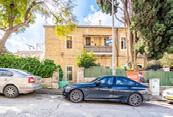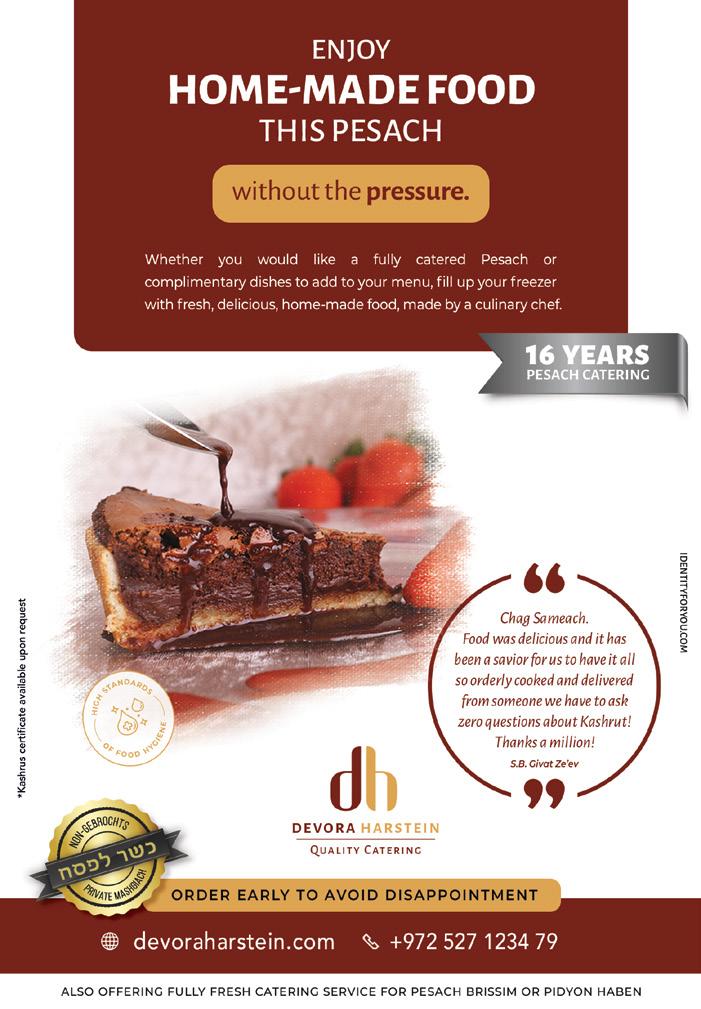
PARSHAT PARAH


The Table and the Mizbe’ach
Rabbi Moshe Hauer
Pg 8
A New Heart
Rabbi Judah Mischel
Pg 36


PARSHAT PARAH


The Table and the Mizbe’ach
Rabbi Moshe Hauer
Pg 8
A New Heart
Rabbi Judah Mischel
Pg 36
04 Dear Torah Tidbits Family
08
Rabbi Avi Berman
The Table and the Mizbe’ach Rabbi Moshe Hauer
12 Aliya-by-Aliya Sedra Summary
Rabbi Reuven Tradburks
18 The Practical Mystic
Rabbi Dr. Tzvi Hersh Weinreb
22 Why Civilizations Die
Rabbi Lord Jonathan Sacks zt"l
26 Probing the Prophets
Rabbi Nachman Winkler
28 TransgressionInternal or External Rabbi Shalom Rosner
30 Fabulous Fires
Rebbetzin Shira Smiles
32 Schedule
OU Israel
36 A New Heart
Rabbi Judah Mischel
38 Bishul Akum: Non-Jewish Employees in Restaurants and Hotels
Rabbi Ezra Friedman
42 Simchat Shmuel
Rabbi Sam Shor
44 Welcoming the Lost “Egyptian” Jews
Rabbi Moshe Taragin
48 Covering the Blood
Rabbi Aaron Goldscheider
50 Hamotzi and Birkat Hamazon on Mezonot Foods
Rabbi Daniel Mann
54 Lights, Cameras, Action? Rabbi Gideon Weitzman
56 National Service: Why Sherut Leumi?
Rebbetzin Rookie and Rabbi Heshie Billet
60 The Y-Files Weekly Comic Netanel Epstein
62 Torah 4 Teens by Teens
Ian Schwartz // Rafi Press
Following Purim, comes the third seasonal Torah Reading - Parshat Parah, which reminds us of our preparations for Pesach.
Photographed by Leah (Tourkin) Yerushalmi I reside in French Hill, Jerusalem. I made Aliyah in two stages (we Jews can be complicated): first from the USA (Washington DC) in 1970, and then from New York City in 1977. I’m blessed with “Chai” Sabra descendants so far - my children and my grandchildren. And I consider my children’s four Sabra spouses as being my family members too, B”H. The synagogue in the new Israel National Library building in Jerusalem has an “Other World” feeling. Hopefully those who pray there will feel a special connection to the Divine as they face in the direction of the Temple Mount and the remnants of the Beit Hamikdash.

All Times According to MyZmanim (20 mins before Sunset in most Cities; 40 mins in Yerushalyim and Petach Tikva; 30 mins in Tzfat and Haifa)
Daf Yomi: Kidushin 69
OU Advocacy OU Israel MITCHEL R. AEDER, PRESIDENT OF THE ORTHODOX UNION Yehuda Neuberger, Chairman of the Board, Orthodox Union | Dr. Josh Penn, OU Kashrus Commission RABBI MOSHE HAUER, EXECUTIVE VICE PRESIDENT | RABBI JOSHUA M. JOSEPH, ED.D.
EXECUTIVE VICE PRESIDENT & CHIEF OPERATING OFFICER Rabbi Dr. Tzvi Hersh Weinreb, Exec. V.P. Emeritus
OU KOSHER: Rabbi Menachem Genack, CEO/Rabbinic Administrator OU Kosher | Rabbi Moshe Elefant, COO/Executive Rabbinic Coordinator ISRAEL: Rabbi Yissachar Dov Krakowski, Rabbinic Administrator | Rabbi Ezra Friedman, The Gustave and Carol Jacobs Center for Kashrut Education/ Deputy Rabbinic Administrator
Headquarters: 40 Rector St. 4th floor, New York, NY 10006 212-563-4000 website: www.ou.org
Editor Emeritus: Phil Chernofsky
Editor: Rabbi Aaron Goldscheider | aarong@ouisrael.org
Advertising: Ita Rochel | 02-5609125 or ttads@ouisrael.org
Website: www.torahtidbits.com
Not getting enough TTs? Too many? None at all?
Contact our DISTRIBUTION 050-577-2111 • ttdist@ouisrael.org
Ranges 11 days Wed - Shabbat
Ranges 9 days Fri. - Shabbat
Oct x - x / x - x Cheshvan
Fri. Mar. 29 - Apr. 6 / 19 - 27 Adar Bet
Earliest Tallit and Tefillin 5:40 - 5:29
Earliest Tallit and Tefillin x:xx - x:xx
Sunrise 6:31 - 6:21
Sunrise x:xx - x:xx
Sof Zman Kriat Shema x:xx - x:xx
Sof Zman Kriat Shema 9:37 - 9:31
Magen Avraham x:xx - x:xx
Magen Avraham 9:01 - 8:54
Sof Zman Tefila 10:39 - 10:34
(According to the Gra and Baal HaTanya)
Sof Zman Tefila x:xx-x:xx (According to the Gra and Baal HaTanya)
Chatzot (Halachic Noon) x:xx - x:xx
Chatzot (Halachic Noon) 12:44 - 12:41
Mincha Gedola (Earliest Mincha) x:xx - x:xx
Mincha Gedola (Earliest Mincha) 1:15 - 1:13
Plag Mincha x:xx - x:xx
Plag Mincha 5:39 - 5:42
Sunset (Including Elevation) x:xx - x:xx
Sunset 7:01 - 7:06
* Please note: we move the clocks ahead one hour on Friday March 29 at 2 am to 3 am
Seymour J. Abrams • Orthodox Union Jerusalem World Center • Avrom Silver Jerusalem College for Adults • Wolinetz Family Shul • Makom BaLev • Birthright • Yachad • NCSY in Israel • JLIC in Israel • Camp Dror • Pearl & Harold M. Jacobs ZULA Outreach Center • The Jack Gindi Oraita Program • OU Israel Kashrut
STUART HERSHKOWITZ, PRESIDENT OU ISRAEL
Zvi Sand / Yitzchak Fund: Former Presidents, OU Israel | Rabbi Emanuel Quint z”l, Senior Vice President | Prof. Meni Koslowsky, Vice President
VAAD MEMBERS:
Michael Elman | Yonatan Frankel | Yitzchak Fund | Daniella Hellerstein | Stuart Hershkowitz | Jeremy Lustman | Meir Raskas | Atara Reichel | Zvi Sand | Norman Schmutter | Mark Schneider | Esther Williams
RABBI AVI BERMAN, EXECUTIVE DIRECTOR, OU ISRAEL
David Katz, CFO, OU Israel | Natan Kandler, COO, OU Israel | Chaim Pelzner, Director of Programs, OU Israel | Rabbi Sam Shor, Director of Programs, OU Israel Center | Rabbi Sholom Gold zt"l, Dean, Avrom Silver Jerusalem College for Adults 22 Keren HaYesod <> POB 1441 <> Jerusalem 9101032
phone: (02) 560 9100 | fax: (02) 561-7432
email: office@ouisrael.org
website: www.ouisrael.org
Founders and initial benefactors of the OU Israel Center: George and Ilse Falk a"h
Torah Tidbits and many of the projects of OU Israel are assisted by grants from THE JERUSALEM MUNICIPALITY
OU Israel, Torah Tidbits does not endorse the political or halachic positions of its editor, columnists or advertisers, nor guarantee the quality of advertised services or products. Nor do we endorse the kashrut of hotels, restaurants, caterers or food products that are advertised in TT (except, of course, those under OU-Israel hashgacha). Any "promises" made in ads are the sole responsibility of the advertisers and not that of OU Israel, the OU Israel Center , Torah Tidbits.

Every week, Torah Tidbits gets printed early on in the week so that it can be organized and distributed over the course of the week to hundreds of shuls in Israel. Given that Purim this year falls on Sunday and Monday, I am writing this column the week before Purim. I would ordinarily discuss the holiday that, by the time you’re reading this, we all just experienced, but it hasn’t happened yet so allow me to reflect on something that occurred to me this past week.
A few days ago, I received notice from the OU Israel Teen Centers Director Chaim Pelzner about an event that was happening in Kiryat Gat. It was the celebration of the opening, the chanukat habayit, of Beit Gujo, the Ethiopian home that OU Israel built in Kiryat Gat. Not only was I involved in the building process, but my children were as well so I decided to take my three younger kids down to Kiryat Gat to attend the event. Knesset member Dr. Segal Malakol, herself part of the Ethiopian Jewish community, along with representatives from the local municipality,
May the Torah learned from this issue of Torah Tidbits be תמשנ
RABBI AVI BERMAN Executive Director, OU IsraelIn loving memory of Harry Naftali Manheim z”l on his 10th
the commander of the police department in Kiryat Gat, and other distinguished members of the Kiryat Gat community, were present for the chanukat habayit.
I was asked to speak and put up a mezuzah, which was a tremendous honor. (It was the first time in my life putting up a mezuzah on an Ethiopian hut!) In my speech, I made sure to mention how my wife and children were here, and how my children took part in building this place. I told the crowd how I wanted my children to see how even when you think you only had a small part in a project, it can accomplish great things. When everyone does a small part, we can all build together. The speeches there were incredibly moving. For example, hearing Azarya speak about the beauty of the Ethiopian community, how they kept themselves in huts in Ethiopia to prevent themselves from assimilating in the big cities, the stories moved me deeply.
After this event, there was a secondary event nearby, and this was extremely emotional for me. Last year, the OU Israel Teen Centers ran a joint program with the Israeli police to have teens from our program meet with local police for educational programs. Specifically, many of the teens who participated had police records. This is a police program called Mila which takes place in many cities, and the idea of the program was that they would come, meet with police over the course of a year, and after finishing the program, their records would be erased. The program was filled with learning and
volunteering opportunities focusing on communal responsibility and sensitivity to the needs of others. The program met 34 times over the course of 2023 and was a great success, ending around Rosh Hashanah time. They had planned to have a graduation ceremony for the group after the holidays, but, of course, those plans were pushed off.
So that night, we attended the graduation ceremony of 23 young women who took part in this program. The police officers Liron, and Avraham spoke about these girls and how dedicated they were and how many of them didn’t even miss one week of the program. They saw how these girls took the program seriously. He spoke about how these girls would participate in communal volunteering activities with the police, giving out food packages to the poor and the elderly, with a determination that was truly inspiring. Liron spoke about how he saw exactly how impactful the process was to these girls.
These girls came from many different backgrounds, from all different communities within Kiryat Gat. My eyes teared up seeing the girls, somewhat shy, yet proud, come up to receive their awards. The police even went out of their way to get them vouchers as well to show their appreciation, which was something way above and beyond the call of duty for them. Keep in mind that this program was not part of their job - the police officers participated in the program after hours and at other times that they were not on duty because they saw how important the program was to these girls and the community at large. These police really showed the girls how much they care, and the girls saw this. They prepared a beautiful canvas that they presented to Liron, to show their appreciation
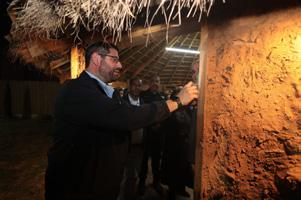

for all his hard work. I could see clearly how much Liron was touched by this gesture.
We were proud that the police agreed to allow this program to run through our Kiryat Gat OU Israel Teen Center, showing they believe in the work that we do. We are proud of such programs and we are making such a big difference in our communities all around Israel.
As we start the book of Vayikra, and we read about the korbanot, sacrifices, we remember that the root of the word korban is k-r-v, to come close. The point of the sacrifices is to bring us closer to Hakadosh Baruch Hu.
Condolences
Gertrude
The sacrifices of these police officers, as well as the OU staff in Kiryat Gat, to go that extra mile and go lifnim mishurat hadin, in order to make sure these teens know that they are loved, that people believe in them and their potential, is so tremendous.
For me to be there and experience it, together with my wife and children, was very meaningful. For my eleven year old son to hear a police officer talk about the right direction to take in life, and how he should do his homework, be a good kid, and move forward to greater and great success, was so incredible. This was also a great message to pass along to my children - Tzofia Chana, Mordechai Tzemach, and Moriah. I hope that they take these important messages of understanding that every little bit counts, and how a small amount of help can be impactful on the big picture, as well as ideas of communal responsibility that they learned from the mouths of our kind and compassionate police officers.
I am grateful to our teens, our communities, but most of all, I am reassured once again that the OU Israel staff that we have in our Teen Centers are really the best staff in the world.
Wishing you all an uplifting and inspiring Shabbat, Rabbi Avi Berman Executive Director, OU Israel aberman@ouisrael.org










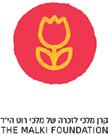





The Talmud (Chagiga 27a) famously teaches that since the Beit Hamikdash was destroyed, our dining room table plays the role once played by the Temple’s altar. This is accomplished by virtue of the guests we host around that table (Rashi). In the most straightforward terms, if we are unable to make offerings directly to G-d, we must instead redirect those gifts to those for whom G-d is most concerned.
We are living in a time of great material blessing, a gift that brings with it enormous challenges and opportunities. Our tables “runneth over” with every imaginable delicacy, but we are making room at that table for others to share those blessings.
During these extremely trying times, we have seen the huge heart of Klal Yisrael. Every day we hear of people who want to do for others, who think creatively and give generously in their ongoing quest to enhance the religious and the material lives of others. In times of crisis, we are overwhelmed by the incredible desire of so many to give, and give, and then give some more, both of themselves and of their resources.
While the Mikdash in Yerushalayim
remains empty for now, Klal Yisrael all over the world is hard at work rebuilding it, acting as G-d’s hand to do their utmost to care for those for whom He is most concerned.
Ashreinu mah tov chelkeinu! How fortunate we are!
Y’hi ratzon she’yibaneh Beit Hamikdash b’mheira b’yameinu.
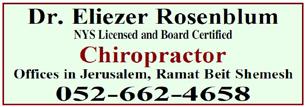


Place orders until April 14
Get 5% off when you place order by April 10

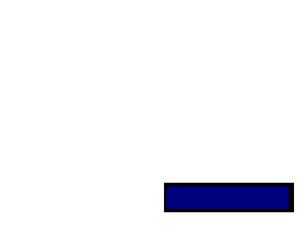
Yosef Ezriel ben Chaya Michal
Chana bat Bruriah
Benzion Simcha Mendel Ben Chana Rachel
Feyge Sara bas Chaya Peshe
Nechama Charna bat Feigel
Leah Naomi bat Tova
Pesach ben Sarah Frieda

“With
t h a t D a v i d s a v e d u s b y s u c c e s s f u l l y n e g o t i a t i n g w i t h t h e b u i l d e r, w e w e r e a b l e t o a d d t o o u r n e w a p a r t m e n t a n e n t i r e a i r- c o n d i t i o n i n g s y s t e m . T h a n k s a g a i n , D a v i d !


I V E O P P O S I T E T H E S E A
a l l D a v i d a t 0 5 4 - 4 3 3 - 2 6 2 1 w w w.a s h ke lo n p ro p e r ti e s .c o m
av id z @ A s h ke lo n P ro p e rt ie s .c o m
In the heart of calm and pastoral BAKAPrivate arab house, 6 rooms, 500m + possibility of building 250m, huge garden, approx. 700m, completely renovated, underfloor heating + a/c, large parking, 5 bathrooms, 5 toilets, green
FOR RENT: TALBIYA - Beautiful & bright apartment, 70m with sukka balcony & Shabbat elevator, large living room, fitted kitchen, bathroom with bathtub & restroom, free parking for residents, 7,900NIS
MENDEL 0528980111
YAELLE 058-7792141
BAKA - 4 rooms, 6,500 NIS
MEKOR HAIM - 4 rooms, 7,900 NIS
BAKA - 3 rooms, 6000 NIS
BAKA - New penthouse, 4 rooms in a small luxurious building with character, alone upstairs, 3rd floor + elevator, 4 orientations, 3 toilets, 2 bathrooms, terrace / sukkah, 70m, parking, store-room
MICHAEL 052-3202488
5450000 NIS MENDEL 052-8980111
MOSHAVA / In a building after TAMA 38, new apartment, 4 rooms, 3rd floor + elevator, balcony/partial sukah, opened sight, 2 bathrooms, calm, parking
MENDEL 052-8980111
HAMOSHAVA GERMANIT - Large beautiful house, 7 rooms, 300m on 3 levels with elevator, private garden, 175m, beautiful roof terrace, 100m, quiet location, pastoral & green, 2 parking spots, 2 large storage rooms, basement, building rights
MICHAEL 052-3202488
BAKA / MEKOR HAIM - 4 rooms, 90m, 2nd floor + elevator, completely renovated, fireplace, a/c, gas heating, very central, close to all amenities
MENDEL 052-8980111
Near Arnona Hatzaira, in a step building, very

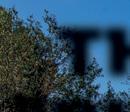







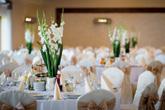



Parshat Vayikra introduced the procedure for each of Olah, Shlamim, Mincha, Chatat and Asham. Parshat Tzav outlines the benefits to the Kohanim in these offerings.
The Kohanim are the religious functionaries. While we need to learn how to approach G-d through the offerings, we also need to outline both the benefits and the limits to the Kohanim. Having a central location for offerings and a class of people responsible for them simply invites corruption. We need the Kohen to offer our offerings. That creates an immediate power imbalance. The Kohanim have ample opportunity to use this power imbalance to their advantage; if we want their assistance, well, pay for it.
Care must be exercised in who is granted the privilege of the office of the Kohen. And care must be given to outline not only what benefits do accrue to the Kohen in exchange for their public service; but also, the limits to what they receive.
Our parsha addresses both these themes. First, what the Kohen receives (and hence, what not). And second, an elaborate inauguration ceremony to impress on the Kohanim that they are servants, not lords. Serving G-d
Mazal Tov to Gene & Alan Portnoi on their Aliyah 13 years ago and on their 56th Wedding Anniversary!
and His people, not assuming positions of power and privilege.
1ST ALIYA (VAYIKRA 6:1-11)
Instructions are given to the Kohanim: The Olah fats and limbs are burnt all night. In the morning the Kohen shall take some of the ashes from the altar and place them at the side. This pile of ashes is removed out of the Mikdash. A fire for the offerings is to burn constantly. When a Mincha flour offering is brought, part is burned on the altar, the remainder eaten by the Kohanim. It may not be chametz.
In this section outlining the benefits given to the Kohen, we begin with the Olah, the offering that is completely burned. The Kohen gets nothing.
The Olah is burned all night. In this we learn a rule concerning the Temple. We know from the Creation story that the day begins at sunset: evening and morning, one day. But not in the Temple. The day in the Temple was the opposite; day followed by night, one day. Offerings are brought during the day and burned through the night. With dawn, a new day begins.
The offerings have time limits. Most offerings must be burned and the Kohen must consume his parts in a day – meaning the day they are brought and the night that follows. Some have 2 days. And the offering we are most familiar with (as we are all the wise child of the seder), the Korban Pesach may be eaten only at night, and perhaps even only until midnight. As we learn the rules of
offerings, we realize how unusual the Korban Pesach is in all of its rules.
An inauguration Mincha flour offering is brought by a Kohen on the first day of his service, by a Kohen Gadol on the first day of his service and daily by the Kohen Gadol. It is boiled, then baked and completely burned. When a Chatat, a sin offering, is brought, it is consumed by the Kohanim in the Temple. The utensils used to cook it must be kashered; while a metal utensil can be put in water, an earthenware one must be broken. An Asham guilt offering is also consumed by the Kohanim in the Temple. For an Olah, the Kohen receives the leather. The Kohen consumes baked Mincha offerings.
Some offerings are completely burned, but most have part burned and the rest eaten by the Kohen. When and where the Kohen or owner consumes the offering varies according to the offering. The “kodesh kodashim – the holiest of holy” offerings are consumed in the Temple grounds itself. That includes the Olah, the Chatat and the Asham. These are offerings brought to express a submission to G-d; the owner does not consume any of it, has no personal pleasure in it. An Olah is completely burned, save the leather, which is given to the Kohanim.
3RD ALIYA (7:11-38)
When a Shlamim, a peace offering is brought to express thanks, 4 different types of 10 mincha breads each are brought. One of each of these 4 types is given to the Kohen. The owner consumes the offering over 2 days. He may not be Tameh, impure. Blood and the offered fats may never be eaten. The Kohen is given the breast and thigh of the shlamim offering.




Sources say that TZAV has TZAV (96) pesukim. Our Chumashim have 97. Either one-off is acceptable for Gimatriya purposes, or there was a slightly different pesukim-division way back.
18 mitzvot; 9 positive and 9 prohibitions.
The Shlamim is eaten by the owner. It is not restricted to the Temple; it may be eaten anywhere in Yerushalayim (or before Yerushalayim within eyesight of the Mikdash). And, the owner has 2 days to consume it.
The Shlamim is associated with joy, satisfaction, thanks. And it has 40 breads. That is a lot. It would seem that built into an offering of joy is sharing. True simcha is engendered by sharing. We derive pleasure from consumption.
But pleasure is not simcha. Simcha is deeper. Simcha is the deep pleasure of standing before G-d, living a life of meaning. And sharing.
4TH ALIYA (8:1-13)
Moshe is instructed to inaugurate the Kohanim. Moshe gathered the people and the Kohanim, pronouncing that the following has been commanded by G-d. Moshe dresses Aharon in the garments of the Kohen Gadol. With the anointing oil he anointed the Mishkan, the altar, and Aharon. He dressed the Kohanim in the Kohen garments, as commanded by G-d.
The instructions for inaugurating the Kohanim were given in Parshat Tetzaveh; the inauguration occurs here. The last 4 aliyot of this parsha all end with the same phrase: as G-d commanded. Perhaps this is to avoid accusations of nepotism. Moshe is not appointing his brother as Kohen Gadol in the way politicians hand out jobs to family and supporters. Moshe was commanded.
This phrase is also foreshadowing. Next parsha Nadav and Avihu will do something they were not commanded, a noteworthy departure from all the loyalty of Moshe and Aharon.
5TH ALIYA (8:14-21)
Moshe brings the inauguration offerings. The Kohanim place their hands on the Chatat, the sin offering. Moshe offers it; the blood is placed on the altar, the fats burned, the animal burned outside the camp. The ram as an Olah is offered; the Kohanim place their hands on the head, Moshe does all of the procedures for its offering.
Moshe acts as the Kohen for the entire inauguration ceremony. He does the slaughter, the sprinkling of the blood, and the offering of the fats. Perhaps this too is to bolster Aharon as Kohen Gadol. Moshe himself could act as the
Kohen Gadol. In fact, for this week he does. But he is charged to transfer that role to others, to divest. Aharon is the Kohen Gadol by Divine fiat.
6TH ALIYA (8:22-29)
The second ram, the Inauguration Ram is brought. Moshe places its blood on Aharon’s right ear, right thumb and right big toe. And does the same for all the Kohanim. He offers the ram, sprinkling its blood and burning its fats. After Aharon and the Kohanim wave the matzot, one of each kind is offered on the altar. Moshe waved the breast, his portion in the offering.
With this offering, the position as official Kohanim of the Jewish people is inaugurated. There are no other Jews, as far as I am aware, who can trace their lineage as far back as Kohanim and Leviim. A Levi today descends from Levi, the son of Yaakov. And a Kohen descends from Aharon, brother of Moshe. That Kohen status begins at this moment in the desert, one year after the exodus from Egypt and continues, unbroken, until today.
7TH ALIYA (8:30-36)
Moshe instructs Aharon to cook the meat of the offering and to consume it and the matza. The Kohanim are not to leave the Mikdash for 7 days. This same procedure is to be done when gaining atonement. Aharon and the Kohanim did all that G-d commanded.
Our parsha outlined some of the benefits to the Kohen, due to his holy service. Support of clergy, or spiritual workers, or ritual leaders is a universal notion, crossing cultures and religions. Our Kohanim are no different in receiving such benefits. However, far more important is not what they receive, but what they do not.
Back in the Yosef story we are told how the Kohanim in Egypt, the Egyptian clergy were
and our next step will be to plant a fruit tree. I never thought of myself as being the agricultural type, but the feeling of settling and planting a portion of Eretz Yisrael, has been truly euphoric. Iy”H, when we plant our tree, and eat the fruits that will grow one day, I think we will be able to truly appreciate that unique Kedusha found in the fruit of Eretz Yisrael!
treated. They received public support of food. They had land. All of the land of Egypt was taken by Paro in payment for the food during the famine; save the land of the priests. The wealthiest people in Egypt were the priests. In our time, the wealth of the Vatican is vast.
Our Kohanim, in contrast, have no land. They receive support, albeit modest. This is another instance of the Torah’s moderation; supporting the Kohanim, though modestly. The King will receive similar instructions; benefits but with limits. Leadership is serving G-d and His people, not self serving. When reading the Torah we need to notice not only what is said but what is not said; what rights are given, but more importantly what rights are not given. The Kohanim receive; but modestly.
To conclude, when you buy your Tu B'shvat fruit this year, don’t search for those dried apricots and banana chips imported from Turkey. Rather, head over to the fresh produce and buy yourself some nice juicy Kedusha-filled Jaffa oranges and thank Hashem for bringing you to this land in order to be able to הבוטמ עבשלו הירפמ לוכאל, imbibing that Kedusha in every bite that you take!!
The purification process of the red heifer is required for those in contact with the dead. Since we all need to bring a Korban Pesach, we all need to be in a state of purity. And although contact with the dead is a mitzvah, it does render one impure. This parsha is a part

of the theme that appears in our seder – we sigh with the awareness that our Pesach seder pales in comparison with a seder featuring the korban Pesach. We don’t have it – but we can read about it. Hence, we read about the elaborate purity process in preparation for the great day of bringing the Pesach offering.
BY RABBI CHANOCH YERES R av, Beit Knesset Beit Yisrael, Yemin Moshe)בי:ז( ונבירקי הדות לע םא - “If he offers it for a thanksgiving…” (7:12)
Rashi explains that we learn by the “peace offering of thanksgiving” that there are four different conditions in which an individual must express thanks. These occasions are when one successfully travels at sea, those who cross the wilderness, those who survived being held in prison and a sick person who has recovered.
Rabbi Avraham Kaufman seems to ask on Rashi that from the pasuk, the bringing of the thanksgiving offering is never obligatory, so how can Rashi explain the need to express thanks in these situations as anything but voluntary?
One can answer that the Pasuk’s message is clear by using the word: ”םא“
There are sources that the word “IM” in Hebrew does not mean “if” but rather “when”. In Parshat Mishpatim it says “(IM) If you lend money to any of My people” (22:24) where the mitzvah, according to Rashi there, is not optional but rather an obligatory act.
Perhaps, to further explain, the requirement to offer a Korban Todah is not an obligation on a legal level but rather a moral one, to thank G-d for being saved from dire straits. This idea is confirmed by the Talmud (Berachot 54b) that uses the language “Tzrichin” instead of “Chayavim”, that one ought to thank G-d in these situations on a moral-virtuous level but not compulsory level.
- Shabbat Shalom
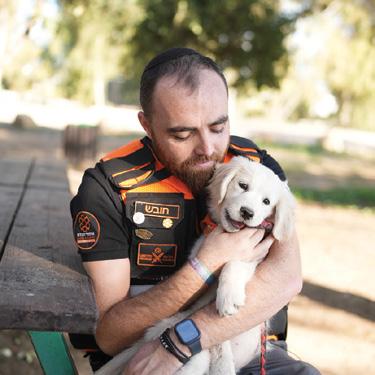

www.israelrescue.org
United Hatzalah's network of 7,000+ first responders help save thousands of lives each year across Israel by providing medical treatment in an average response time of 90 seconds or less.




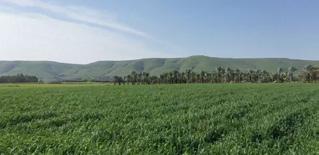
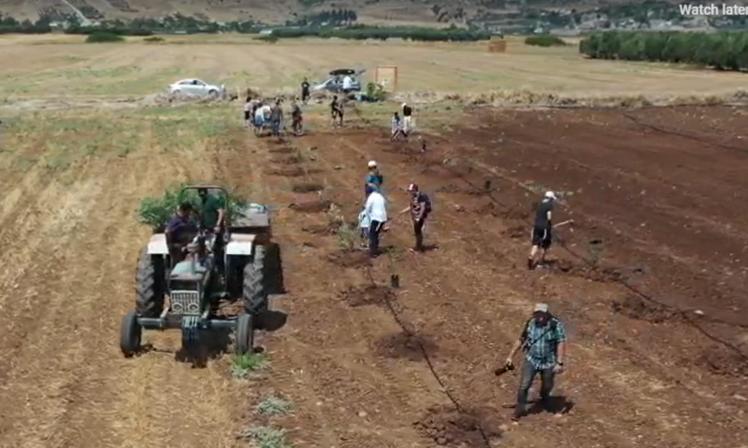






The world did not know that he was a mystic. He was an accomplished diplomat, who knew how to deal with people in positions of great power. Some characterized him as a shrewd, and even manipulative, manager of men. His name was Dag Hammarskjold, and he was the second Secretary-General of the United Nations.
He died in an airplane crash in September of 1961 and was posthumously awarded the Nobel Peace Prize. It was as an astute and successful politician that the world knew him.
It was only after his tragic and untimely death that his personal journal was discovered. It was subsequently published under the title Markings, and it revealed a rare depth of introspection, which some described as poetic, whereas others saw in it poignant expressions of mystical experiences.
For me, Hammarskjold was but a twentieth-century example of my own favorite type of hero, the person who combines worldly
on the occasion of your 100TH BIRTHDAY AD 120 good years
Love the whole family
skills with a private spiritual essence. He was a man who lived in the world of action, dealing with the obstinate problems of international relations, but he drew his inspiration from sources within his innermost being.
The Jewish biblical tradition knows of quite a few heroes of this type—men who were engaged in the affairs of the world, but also in touch with the deep wellsprings of their souls. Surely, the Patriarch Abraham was one such person, and King David was clearly another.
Another twentieth-century example of an individual who could harmonize his profound inner inspiration with the demands of life as a public figure was Rabbi Abraham Isaac Kook, the first chief Rabbi of the Land of Israel, of whom I have written frequently in this weekly column. He too was characterized by many as a mystic, and indeed his written works testify to his mystical bent. But he was engaged in public affairs in an era of history which demanded political acumen, diplomatic skill, and the courage to act upon religious and nationalistic convictions.
Rav Kook’s commentary on a passage in this week’s Torah portion, Parshat Tzav (Leviticus 6:1-8:36), offers a very creative analysis of the symbolism of the Temple sacrifices which illustrates the combination of inner inspiration and outer action which I find so fascinating, so rare, and so very necessary.
At the beginning of the parsha, we read of
the olah offering, the olah being that sacrifice which was totally consumed by the fire upon the altar. As we read the details of this offering, we learned that its service involved three different locations, with descending sanctity:
1. Upon the altar, of which we read “...It is burned upon the altar all night until morning, while the fire on the altar is kept going on it.” (Leviticus 6:2)
2. Next to the altar, of which we read “The priest… shall take up the ashes to which the fire has reduced the burnt offering on the altar, and place them beside the altar.” (ibid. 6:3)
3. Outside the camp, of which we read “He shall then take off his vestments and put on other vestments, and carry the ashes outside the camp...” (ibid. 6:4)
We then read that “the fire on the altar shall be kept burning, not to go out” and that “every morning the priest shall feed wood to it.” (ibid. 6:5)
Rav Kook sees the three different locations as metaphors for three different stages which are necessary in what he calls the prophetic life, but which we can readily apply to the life of every human leader.
The first stage is “a blaze of sacred flames inside the human soul,” corresponding to the fire on the altar. This is the deep inner experience which can be superficially described as introspective insight, but which is in truth a mystical moment.
The prophet, or genuine leader, must not allow that experience to remain buried internally. He must raise it to the surface of his being and integrate these “flames” into his external character and unique personality. This integration is the second stage.
But he cannot stop there. He must now take the person whom he has become by virtue of
incorporating the profound spiritual experiences into his very human self and connect to the outside world, far away from the mystical cocoon which he has heretofore enjoyed.
In this third stage, when he engages the real world with all its imperfections, he must be ready to change his vestments. He must put on not only new clothing but a new persona. In the words of the Talmud (Shabbat 114a), “The clothes worn by a servant while cooking for his master should not be used when serving his master wine”.
Yet, even during this third stage of interaction with the mundane affairs of the world, the fires on the altar continue to burn. The sources of warmth, illumination, and inspiration are ever present, even if they are in some manner far removed.
And the prophet, or leader, must ever seek to renew himself, by returning each and every morning to the altar’s hearth, to place new kindling wood there, and to rejuvenate his soul.
This brilliant application of the detailed laws of the Temple sacrifices to the psyche of the prophet/leader can be found in the first volume of Rav Kook’s commentary on the Siddur, or daily prayer book, Olat Re’iyah. It is masterfully summarized in Rabbi Chanan Morrison’s Gold from the Land of Israel.
Some readers might find it odd, and others might even find it improper, for me to be comparing the saintly Rabbi Kook to the worldly Dag Hammarskjold. But I have long followed Maimonides’ advice to accept the truth from
every source, and I find much spiritual truth in the words of this Swedish diplomat.
This was a man wise enough to say, “The longest journey is the journey inwards.”
This was a man sufficiently spiritual to say, “God does not die on the day when we cease to believe in Him, but we die on the day when our lives cease to be illumined by the steady radiance, renewed daily, of a wonder, the source of which is beyond all reason.”
This was a man who could offer us this sage advice: “In our age, the road to holiness necessarily passes through the world of action.”
Rav Kook, using the ritualistic terminology of the ancient Temple sacrifices to be found in this week’s Torah portion, delivered a similar message, and offered us the identical sage advice: “The road to holiness passes through the world of action.”
But he would add, “And back again!”
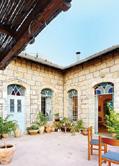









JERUSALEM SALES
NEW PROJECTS - Excellent Opportunities
Desirable Neighborhoods - Call For Information
SHAAREI CHESSED / RECHAVIA
*Duplex! 5 bdrms, 25 sqm kitchen, succah, shabbat elevator, 2 parking, storage.
*New 228 sqm duplex penthouse, 30 sqm succah, shabbat elevator, parking, view
TALBIEH
250 sqm + 200 sqm garden, private land
NACHLAOT
2 rms, priv entr, storage room, NIS 2,190,000
OLD KATAMON
*Renovated 3 bdrm, ensuite MB, succah, low floor
*160 sqm 4 bdrms, garden, storage, parking
HAR NOF -New listing!
Centrally Located– 10 room duplex with 400 sqm garden (room for a pool), excellent condition
MEKOR CHAIM - NEW PROJECT
126 sqm, spacious 4 bdrms, succah, 3 exposures, 2 parking, storage. Close to Baka & G. Colony
SALE/RENTAL - RAMOT B
Cottage, 200 sqm, 5 bedroom, 3.5 bathrooms, semi furnished, garden, view. Option for a unit
FOR MANY MORE PROPERTIES: 02-651-4030




COVENANT
May the learning of these Divrei Torah be תמשנ יוליעל
HaRav Ya'akov Zvi ben David Arieh zt"l
תומשנ יוליעל
ה״ע רטרש קחצי תב הינעמו בייל הירא ןב לאירזעו ה״ע זייא דוד לארשי תב הדלוגו רשא בקעי ןב סחנפ
In The Watchman’s Rattle, subtitled Thinking Our Way Out of Extinction, Rebecca Costa delivers a fascinating account of how civilizations die. When their problems become too complex, societies reach what she calls a cognitive threshold. They simply can’t chart a path from the present to the future.
The example she gives is the Mayans. For a period of three and a half thousand years, between 2,600 BCE and 900 CE, they developed an extraordinary civilization, spreading over what is today Mexico, Guatemala, Honduras, El Salvador, and Belize, with an estimated population of 15 million people.
Not only were they expert potters, weavers, architects, and farmers, they also developed an intricate cylindrical calendar system, with celestial charts to track the movements of the stars and predict weather patterns. They had their own unique form of writing as well as an advanced mathematical system. Most impressively they developed a water-supply

infrastructure involving a complex network of reservoirs, canals, dams, and levees.
Then suddenly, for reasons we still don’t fully understand, the entire system collapsed. Sometime between the middle of the eighth and ninth century the majority of the Mayan people simply disappeared. There have been many theories as to why it happened. It may have been a prolonged drought, overpopulation, internecine wars, a devastating epidemic, food shortages, or a combination of these and other factors. One way or another, having survived for 35 centuries, Mayan civilization failed and became extinct.
Rebecca Costa’s argument is that whatever the causes, the Mayan collapse, like the fall of the Roman Empire, and the Khmer Empire of thirteenth century Cambodia, occurred because problems became too many and complicated for the people of that time and place to solve. There was cognitive overload, and systems broke down.
It can happen to any civilisation. It may, she says, be happening to ours. The first sign of breakdown is gridlock. Instead of dealing with what everyone can see are major problems, people continue as usual and simply
pass their problems on to the next generation. The second sign is a retreat into irrationality. Since people can no longer cope with the facts, they take refuge in religious consolations. The Mayans took to offering sacrifices. Archaeologists have uncovered gruesome evidence of human sacrifice on a vast scale. It seems that, unable to solve their problems rationally, the Mayans focused on placating the gods by manically making offerings to them. So apparently did the Khmer.
Which makes the case of Jews and Judaism fascinating. They faced two centuries of crisis under Roman rule between Pompey’s conquest in 63 BCE and the collapse of the Bar Kochba rebellion in 135 CE. They were hopelessly factionalised. Long before the Great Rebellion against Rome and the destruction of the Second Temple, Jews were expecting some major cataclysm.
What is remarkable is that they did not focus obsessively on sacrifices, like the Mayans and the Khmer. With their Temple destroyed, they instead focused on finding substitutes for sacrifice. One was gemillat chassadim, acts of kindness. Rabban Yochanan ben Zakai comforted Rabbi Joshua, who wondered how Israel would atone for its sins without sacrifices, with the words:
“My son, we have another atonement as effective as this: acts of kindness, as it is written (Hosea 6:6), ‘I desire kindness and not sacrifice.’” Avot deRabbi Natan 8
Another was Torah study. The Sages interpreted Malachi’s words, “In every place offerings are presented to My name,” to refer to scholars who study the laws of sacrifice. (Menachot 100a).
“One who recites the order of sacrifices is as if he had brought them” (Taanit 27b).


Jerusalem Real Estate is My Business
Eta: 054-723-3863
Amazing stand alone homes in OLD KATAMON,
TALBIYA, BAKA, GERMAN COLONYIn OLD KATAMON 220 sqm plus 80 sqm of outdoor space. For renovation, pkg & storage. Includes separate unit. 9,000,000 NIS
In GERMAN COLONY. 300 sqm plus 170 sqm registered garden. Plus parking and roof top terrace. Price: 18,000,000
OLD KATAMON Spacious 253 sqm apartment
FOR RENT. 7 bedrooms, 4.5 bathrooms, large outdoor space , private entrance, parking. 32K/mo
In BAKA, 236 sqm on two floors, plus 80 sqm of outdoor space, high ceilings, authentic Jerusalem bldg with modern addition. 4 bedrooms, office/ or sitting room. Master suite on entrance level. Parking & storage. Price: 15,950,0000
BAKA Two story penthouse 200 sqm. Light open space kitchen & living room, sukkah terrace. Elevator, balconies, 2 parking, elevator, storage room. 12,500,000 NIS
GERMAN COLONY/TALBIYA
400 sqm on one floor, parking, storage, large sukka terrace






Eta Morris Realty, Ltd.
etamorrisrealestate@gmail.com
Eta: 054-723-3863 etamorrisrealty.co.il
Malachi 1:11
Another was prayer. Hosea said, “Take words with you and return to the Lord . . . We will offer our lips as sacrifices of bulls” (Hos. 14:2-3), implying that words could take the place of sacrifice.
He who prays in the house of prayer is as if he brought a pure oblation.
Yerushlami, Perek 5 Halachah 1
Yet another was teshuvah. The Psalm (51:19) says “the sacrifices of God are a contrite spirit.” From this the Sages inferred that “if a person repents it is accounted to him as if he had gone up to Jerusalem and built the Temple and the altar and offered on it all the sacrifices ordained in the Torah” (Vayikra Rabbah 7:2).
A fifth approach was fasting. Since going without food diminished a person’s fat and blood, it counted as a substitute for the fat and blood of a sacrifice (Brachot 17a). A

sixth was hospitality. “As long as the Temple stood, the altar atoned for Israel, but now a person’s table atones for him” (Brachot 55a). And so on.
What is striking in hindsight is how, rather than clinging obsessively to the past, leaders like Rabban Yochanan ben Zakai thought forward to a worst-case-scenario future. The great question raised by parshat Tzav, which is all about different kinds of sacrifice, is not “Why were sacrifices commanded in the first place?” but rather, “Given how central they were to the religious life of Israel in Temple times, how did Judaism survive without them?”
The short answer is that overwhelmingly the Prophets, the Sages, and the Jewish thinkers of the Middle Ages realised that sacrifices were symbolic enactments of processes of mind, heart, and deed, that could be expressed in other ways as well. We can encounter the will of God by Torah study, engaging in the service of God by prayer, making financial sacrifice by charity, creating sacred fellowship by hospitality, and so on.
Jews did not abandon the past. We still refer constantly to the sacrifices in our prayers. But they did not cling to the past. Nor did they take refuge in irrationality. They
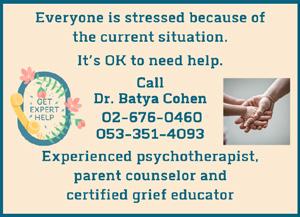
thought through the future and created institutions like the synagogue, house of study, and school. These could be built anywhere, and would sustain Jewish identity even in the most adverse conditions.
That is no small achievement. The world’s greatest civilisations have all, in time, become extinct while Judaism has always survived. In one sense that was surely Divine Providence. But in another it was the foresight of people like Rabban Yochanan ben Zakai who resisted cognitive breakdown, created solutions today for the problems of tomorrow, who did not seek refuge in the irrational, and who quietly built the Jewish future.
Surely there is a lesson here for the Jewish people today: Plan generations ahead. Think at least 25 years into the future. Contemplate worst-case scenarios. Ask “What we would do, if…” What saved the Jewish people was their ability, despite their deep and abiding faith, never to let go of rational thought, and despite their loyalty to the past, to keep planning for the future.
These weekly teachings from Rabbi Sacks zt”l are part of his ‘Covenant & Conversation’ series on the weekly Torah teaching. With thanks to the Schimmel Family for their generous sponsorship, dedicated in loving memory of Harry (Chaim) Schimmel. Visit www.RabbiSacks.org for more.


Jerusalem Real Estate is My Business
Eta: 054-723-3863
Amazing stand alone homes in
OLD KATAMON, TALBIYA, BAKA, GERMAN COLONYIn OLD KATAMON 220 sqm plus 80 sqm of outdoor space. For renovation, pkg & storage. Includes separate unit. 8,999,000 NIS
In GERMAN COLONY. 300 sqm plus 170 sqm registered garden. Plus parking and roof top terrace. Price: 18,000,000
OLD KATAMON Spacious 253 sqm apartment
FOR RENT. 7 bedrooms, 4.5 bathrooms, large outdoor space , private entrance, parking. 32K/mo
In BAKA, 236 sqm on two floors, plus 80 sqm of outdoor space, high ceilings, authentic Jerusalem bldg with modern addition. 4 bedrooms, office/ or sitting room. Master suite on entrance level. Parking & storage. Price: 15,950,0000
BAKA Two story penthouse 200 sqm. Light open space kitchen & living room, sukkah terrace. Elevator, balconies, 2 parking, elevator, storage room. 12,500,000 NIS
GERMAN COLONY/TALBIYA
400 sqm on one floor, parking, storage, large sukka terrace





Eta Morris Realty, Ltd.
etamorrisrealestate@gmail.com
Eta: 054-723-3863 etamorrisrealty.co.il

The haftarah we read on Shabbat Parah is taken from the 36th perek of Sefer Yechezkel and, understandably, focuses upon the purity and impurity, Tum’ah and Taharah, the very theme of the special Maftir we read. The prophet’s painful depiction of how Israel had “contaminated” the Holy Land and undermined its essential sanctity, can deflect the reader from appreciating the essential message that Yechezkel hopes to share. Throughout the year, the haftarot readings are meant to connect to a theme found in the weekly parasha or in a separate Maftir read upon a special occasion. Due to that, the haftarah chosen from the books of the nevi’im can be only a short selection taken from a larger prophetic message, and, as a result, does not present the navi’s complete message.
And that is true about this week’s haftarah.
You will note that our reading starts in the middle of the 36th perek – at the 16th verse. It is there, in the middle of the prophet’s message, where Yechezkel first speaks to Israel of their sins and debaucheries that polluted the sanctity of the land. He explains to the people that it was their immoral behavior that caused Hashem’s wrath and led to their defeat and exile. And, exacerbating their behavior that had defiled the land itself was their actions in the exile that desecrated Hashem’s name among the foreign nations.
These p’sukim of harsh criticism had always troubled me as being an improper message that was supposed to prepare us for the
upcoming joyous celebration of the holiday of Pesach. This year, however, I was fortunate to read the approach of Rav Amnon Bazak, in his sefer: “Yechezkel: The Prophet Who Was Human” [My translation of “Yechezkel: HaNavi Shehayah ‘Ben Adam’ ”] who explained the haftarah segment of the perek in light of the entire theme of the chapter itself.
Rav Barak teaches that chapter 36 is one of Yechezkel’s prophecies of redemption! He reminds us that the previous perek (35) was meant as an introduction to the following chapter – that of our haftarah. This 35th perek opens with Hashem’s warning to “Har Seir”, Mount Se’ir, predicting that it would soon become decimated and desolate, as would all the cities of Edomite nation. The punishments that would befall them are results of Edom’s eternal enmity and hatred of Israel. This nevuah was not, however, delivered directly to Edom but specifically to Israel. It was Hashem’s assurance to His nation that the enemies of Israel would be humbled as part of the coming redemption of the Chosen People.
And that is what the following chapter is about. Here, the 36th perek begins by addressing “Harei Yisrael,” “the Mountains of ISRAEL depicting a glorious future for the Land of Israel and promising the reversal of her state of desolation to one of fertility and growth. Likewise, Yechezkel predicts the nation’s return to her homeland, the rebuilding of her cities and the repopulation of her country.
be in loving memory and
our dear parents whose yahrtzeits are in Kislev
been memorialized in a popular song, "An eternal people does not fear the long and arduous path."
Doris Weinberger a"h
ולסכ 'ד -ה"ע המלש לאקזחי תב האל הרובד
It is only in the final section of this chapter, the “negative” part of our haftarah, that the navi reviews the sins and iniquities that forced Israel into galut. The haftarah’s inclusion of the act of sprinkling the cleansing waters in order to purify the “defiled” nation, is what connects us to the theme of Parashar Parah and why it was chosen to be read on this Shabbat.
Max Weinberger z”l
ולסכ ז"כ -ל"ז בד ןב ךלמילא
Patience is necessary for those who follow Isaac's way. But a wise woman taught us that patience is but another name for hope. That woman was Jane Austen, who put these words into the mouth of one of the characters in her great novel, Sense and Sensibility: "Know your own happiness. You want nothing but patience—or give it a more fascinating name: call it hope."
Greatly missed by their children, grandchildren and great grandchildren
Rav Aryeh and Dvora Weinberger
Bernie and Leah Weinberger
Menachem and Hannah Katten
But it is essential to understand that this section was NOT the focus of Yechezkel’s message to his, and to the future, generations! The only purpose mentioning these “negatives” was to reinforce the fact that G-d, in His determination to prepare His people for the “Ge’ulah”, would cleanse Israel from those sins, so that they would be deserving and worthy for their redemption.
In observance of the Shloshim of our friend Yehuda Leib Berren z"l
Rav Menachem Weinberg will give a shiur in his memory "Heroic Joy"
Monday evening, 23 November/ 8 Kislev 7:30pm
Zoom Meeting: 853 8980 1519
Password: Yehuda
And THIS theme is why we must realize that our haftarah is not – in any way – an “improper” message for the weeks before Pesach. It is a detailed description of our future release from the golus subjugation - including the preparation that would precede it.
And, as such, our haftarah is, in truth, the perfect prelude to the Festival of Freedom.



shmuelnathan4@gmail.com

ANGLO- SAXON-JERUSALEM
FOR SALE IN JERUSALEM:
KIRYAT SHMUEL (HARAV BERLIN)
Large, well-maintained, 3 rooms, second floor, view, excellent location: near shops & cafes, parks, museums, synagogues, schools
Anita: 053-6318355
IN QUIET & PASTORAL GERMAN COLONY
3-room apartment with private beautiful & large courtyard, small original and intimate house, easily dividable into 2 apartments: 2-room + studio apartment (ideal for clinic), both with private entrances & own courtyards, full privacy & quiet. Near synagogues, parks, Jerusalem’s Nature Museum, Emek Refaim shops, cafes and more. Exclusive! Moshe 053-6305725
GERMAN COLONY
One of a kind! Beautiful, sunny, fully renovated 5 rooms, 133 sq.m. in historic building, high ceilings, galleries in bedrooms
Anita 053-6318355
3 Moshe Hess St., Jerusalem
0778038511

תשחנ ילכְב־םאו רבשי וב־לשבת רשא שרח־ילכְ )אכְ:ו ארקיו( :םימב ףטשו קרמו הל �� שב
An earthenware vessel in which it is cooked shall be broken, but if it is cooked in a copper vessel, it shall be purged and rinsed with water. (Vayikra 6:21).
The Torah details certain laws applicable to a Korban Chatat (תאטח ןברק), including that the vessel in which the sacrifice was cooked is to be dealt with differently depending on its substance. An earthenware vessel in which the Korban was cooked is to be broken and a copper vessel in which the Korban was cooked is to be rinsed with water.
Rashi explains that although the Torah specifically highlights the laws relating to what is done with different types of vessels in which a Korban is prepared in connection with a Korban Chatat, it is applicable to all sacrifices. םישדקה לכְל ןידה אוהו.
The Kli Yakar derives an insightful lesson from the fact that the rules regarding vessels appear in connection with a תאטח ןברק in particular, although they apply to vessels used for all sacrifices. A Korban Chatat is offered after one engages in a transgression, albeit even inadvertently. The Kli Yakar draws an analogy from the purification process of vessels to the purification process of man.
Purification of vessels is similar in nature to the purification process of individuals. Just as certain vessels, like earthenware, absorb more of a substance and so they need to be broken, so too when certain individuals engage in a transgression it becomes “absorbed” within them, it becomes a part of them, and they need to be “broken” in order to atone for such transgression. Yet, there are others whose negative acts are not internalized and are easily changed and so they only need to be washed off or immersed in a mikvah in order to get purified.
Rav Yosef Dov Soloveitchik expresses a complementary idea in הבושתה לע. The Torah states:
לכְמ םכְתא רהטל םכְילע רפכְי הזה םֹויב־יכְ ׃ורהטת ’ה ינפל םכְיתאטח
For on this day atonement shall be made for you to purify you of all your sins; you shall be pure before הוהי.
The pasuk above uses two terms with respect to the teshuva process. First Kapara (atonement) and then Tahara (purification). What is the difference between Kaparah and Taharah? Rav Soloveitchik suggests that when one is forgiven for a transgression and “freed” from the consequences of punishment for
And commitment to ‘chose with Midot, day, central perthat to far always improve the congrandchildren with bring on greater

committing that transgression it is referred to as Kaparah – atonement. Although such an
nated, and this condition may be remedied - immersing in a mikvah. In other words - by wholehearted repentance. Without personal repentance- Taharah is unachievable. Engaging in a transgression taints our personality and we need to rid
When we have shortcomings and engage in transgressions, we have to make sure we act like “copper” and not “earthenware”. We cannot let negative traits become a part of our personality. We must be able to easily cleanse ourselves from such activity and regain our


• Curtains & draperies
• Designer curtains
• Venetian & Woven wood blinds
• Blackout, Vertical, Roller, Roman & Pleated shades

www.ashleywilde.co.il


“Esh tamid tukad al hamizbeach lo tivkeh – Thus, there shall be a constant fire kept burning on the altar, without being extinguished.” (Vayikra 6:6) In addition, a fire descended from Heaven onto the altar. Let us see how these two concepts are still relevant today even though we have no Mikdash and no altar.
Sefer HaChinuch explains that Hashem shrouds His presence in the natural phenomena of earthly realities. Thus, there must be a natural fire burning continuously on the altar to conceal the flow of supernatural energy from a Heavenly fire. We find this idea as well before Keriyat Yam Suf; an easterly wind blew all night before the sea split, allowing one to believe that natural forces such as the weather conditions caused the Splitting of the Sea.
Rav Naiman in Darchei Mussar notes that once Am Yisrael crossed the sea, the Egyptians were able to perceive the event as miraculous. So much so that they said, “Anusa me’penei Yisrael ki Hashem nilcham lahem be’Mitzrayim –Let us flee from Israel! G-d is fighting for them against Egypt!” (Shemot 14:25) At this point the Egyptians even were able to recognize in retrospect that everything that had transpired in Egypt was the Hand of Hashem. The plagues, as tremendous as they were, still had an element of natural to them and the Egyptians could
have thought that they were a result of shifts in nature or possibly a fluke of nature.
Rav Scheinerman in Ohel Moshe explains that we too fall prey to the failure of recognizing Hashem’s greatness in His daily interactions. Chazal instituted in the “Modim” tefillah to thank Hashem for “the miracles that are with us daily, and the wonders and goodness that He performs at all times.” We, with our physical eyes, see only the natural in front of us, however, it is our duty to pierce through the veil and discover the supernatural.
This idea is also expressed in the bracha of “Geulah.” Ye’arot Devash explains that we refer to Hashem as a “go’el chazak,” meaning that Hashem performs things outside of the natural order to save the Jewish people. We conclude the bracha in the present tense, “Go’el Yisrael,” since Hashem is continuously redeeming us, saving us in unusual ways. While we notice the “fire down below” we must open our eyes and simultaneously be aware of the “fire from Above.”
This verse can also be understood on an allegorical level. The Shelah Hakadosh quotes Rav Cordevero who teaches that saying this verse affords one protection from sinful thoughts. The Ketav Sofer further explains that one whose heart is on fire to do Hashem’s Will, will find a Divine shield against impure thoughts. The mizbe’ach can be viewed as a metaphor to such a person, created from the ground. When one has the passion of dedication continuously in his thoughts, then Hashem will provide assistance and purify him with a fire of protection from Above.
is able to have an effect on the physical world whereas before Torah and mitzvot were considered strictly spiritual matters.
The Talmud (Shabbat 88b) states that when the Jews heard G-D’s divine voice, they all died from its intensity and afterwards G-d brought them back to life. I think this emphasizes why Hashem cannot be openly present in this world. For if he was, the Jews’ free will would no longer be preserved and we would follow Hashem in everything. If his awe and will were so apparent, we would be compelled to follow him without having a real choice.
TO SPONSOR A SHIUR CONTACT
Chana Spivack - 050-229-4951 or donate online: https://www.ouisrael.org/donate/ou-israel-center/
RABBI SHAI FINKELSTEIN'S SHIUR
Sponsored for this academic year by the Sondhelm and Wertenteil families in memory of Mel David z"l ל"ז הקבר אביוטו ריאמ םהרבא ןב לדנמ םחנמ
RABBI ADLER’S SHIUR
Sponsored for this academic year by the Frist family in memory of their beloved daughter and sister Elisheva Frist a"h - ה"ע ןמלז תב אמיס עבשילא
RABBI GOLDSCHEIDER'S SHIUR
Sponsored for this academic year תמשנ וליעל ל''ז המלש ןב בוט םשו ה''ע םהרבא תב םירמ
REBBETZIN SHIRA SMILES SHIUR
Sponsored for this academic year by Dr. & Mrs. Menachem Marcus in memory of their parents, Rose & Dr. Emanuel Marcus z"l and Rosi & Ernest Strauss z"l ל"ז סוקרמ השמ ןב יכדרמו ריאמ ףסוי תב לזייר ל"ז סוארטש דוד ןב לאינדו םהרבא תב דומיל
RABBI BREITOWITZ'S TUESDAY SHIUR - MINCHAT CHINUCH
JLIC at Tel Aviv University does amazing work in bringing Jews together and teaching us all about the torah we received at Mount Sinai. JLIC, I believe, helps us
Sponsored for this academic year by Rabbi Refoel & Sharon Auman in memory of their parents Edith & Reiner Auman z”l ד"יה לאפר תב ה"ע רתסאו ל"ז קודצ ןב הנוי and their son Rabbi Shmuel Eliyahu Auman z"l י"נ לאפר ברה ןב ל"ז והילא לאומש ברה
RABBI GOLDIN'S SHIUR
Sponsored for this academic year by Dr. & Mrs. Menachem Marcus in memory of beloved aunts Irma Haas a"h and Hilde Myer a"h
RABBI MANNING'S SHIUR
Sponsored for this academic year תמשנ יוליעל ל''ז ןמלק ןב גילזו ה''ע תידנרב תב הנרב
RABBI TAUB'S WEEKLY THURSDAY PARSHAT HASHAVUA SHIUR
Sponsored by The Jewish Legacy Foundation
Tzitzit tying at the OU Israel Center with Ruti - no experience needed
Mondays at 1:30pm and Wednesdays at 12:00pm
PLEASE NOTE DEADLINES FOR ADVERTSING THROUGH PESACH
Shabbat, April 5-6 (Sh'mini)
Shabbat, April 12-13 (Tazria)
Shabbat, April 19-20 (Shabbat Hagadol, Pesach, Acharei)
Shabbat, May 10-11 (Kedoshim)
» Sun., March 31
» Sun., April 7
» Thur., April 11
For Sale: Ben Maimon, 4 rooms, 113m, 2 bathrooms, porch, 1st floor, elevator, 6.2 million NIS
» Sun., May 5
Many thanks to all the TT advertisers who sent in their ads early for this week's issue to make our early deadline. Ita Rochel
Smadar 050-3114040 // 02-642-4329
smadi_bida@walla.co.il
Resumes Tuesday, May 21
WOMEN'S WRITING WORKSHOP AT THE OU ISRAEL CENTER
Tuesday
Monday mornings 10.30-12.30
For more details, call Ruth 02-628-7359 or Judy 054-569-0410
המלש האופר
הניאר תב הרוא

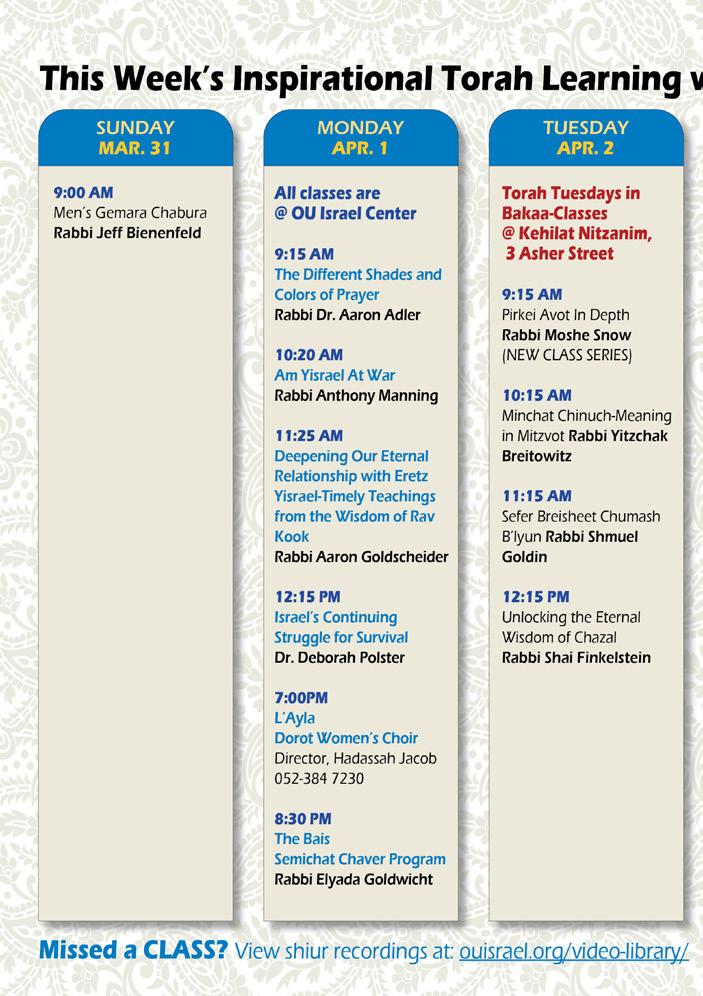


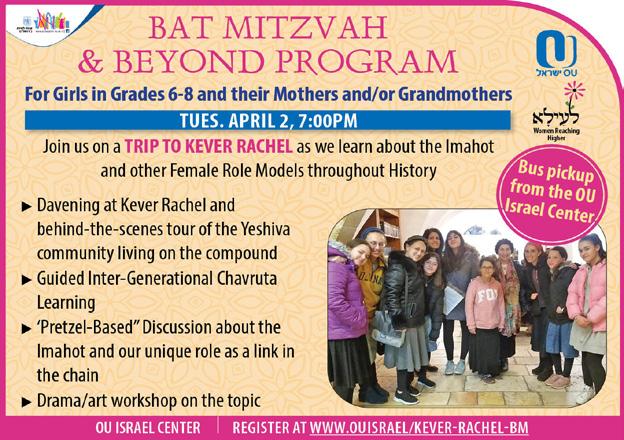



Rav Avraham Simcha Kaplan was the Ashkenazic Chief Rabbi of Tzfas from the time of the founding of the State of Israel for nearly half a century. Before the war, while Rav Avraham Simcha was a student at the Mir Yeshiva in Belarus, he stayed with an older couple who had a single child.
One Erev Shabbos, as he headed out to yeshiva, Avraham Simcha saw the man of the house preparing to leave to the marketplace for some errands. As he departed, his wife said, “It’s Erev Shabbos; come back quickly.” The husband smiled knowingly, and went on his way. Later in the day, when he returned from yeshivah, Avraham Simcha noticed the woman of the house appeared anxious and unsettled, continuously went to the window, looking out for her husband, softly saying, “Shabbos is coming… Soon it will be Shabbos!”
A thoughtful young man, Avraham Simcha attempted to allay her worries. “Shabbos is still a couple of hours away, I’m sure he’ll return in plenty of time…” Without looking away from the window, the older woman replied with a sigh, “Perhaps if you knew our story, you would understand…”
“After many years of yearning and hoping, my husband and I were blessed with a son,” she explained. “From birth, it was clear he was not healthy and we were referred to a
specialist who informed us in no uncertain terms that our child had an untreatable heart condition and would not survive infancy. We were crushed by the prognosis and felt helpless… after so many years, we were finally blessed with a child, and now…
“On our way back home to Mir, we made a detour to Radin to seek a bracha from the Chafetz Chaim, sharing our agony. “The Chafetz Chaim furrowed his brow, closed his eyes and after a few moments, said, ‘I request of you to welcome Shabbos earlier than usual. Add to the honor of Shabbos Kodesh by preparing the table, setting up the neiros, and being ready by chatzos (mid-day). And may you and your child be blessed!’
“From the moment I made this kabbalah, our child’s condition improved. The doctors were baffled and tried to understand the sudden turnaround in our son’s health. Years later, the specialist who had examined him asked if we had received care at the cardiology clinic in Vienna. We explained that we had not. “Then where did you go?” asked the specialist with surprise. “To the great sage and rabbi, the Chafetz Chaim in Radin. He blessed us and gave us advice to follow.”
The famed surgeon smiled. “We doctors can only do our best to heal a heart that is unhealthy. The righteous sage you visited must have been able to create a completely new heart for him! There is no other medical or scientific explanation for his recovery.”
Turning her attention back to Avraham Simcha, the hostess said, “Since then we are
always careful to finish all of our Erev Shabbos preparations early in the day… Perhaps now you can understand why I anxiously await my husband’s return; it is almost Shabbos, and we must be ready.”
This Shabbos, in preparation for offering the Korban Pesach in a state of purity, we read the maftir of Parshas Parah, which centers around the ritual purification of the Red Heifer. In our haftarah, Yechezkel haNavi expansively addresses the state of tumah and the defilement of Klal Yisrael in disrespecting Hashem’s name. For the sake of k’vod Shamayim we will be restored in teshuvah to our homeland and purified with cleansing waters to faithfully observe Yiddishkeit.
םכְברקב ןתא השדח חורו �ש דח בל םכְל יתתנו םכְל יתתנו םכְרׂש במ ןבאה בל־תא יתרסהו רׂש ב בל
And I will give you a new heart and a new spirit I will place within you,
And I will remove the heart of stone from your bodies and give you a heart of flesh.
(Yechezkel, 36:25-26)
The result of teshuvah is obtaining a new heart, a pure heart, a heart that opens to Hashem in prayer.
Once a Jew complained to Reb Simcha
Bunim of Peshischa that he was suffering from a headache and was unable to pray. Wishing him good health, the Rebbe asked, “But what does the head have to do with prayer? ־לכְב ודבעלו םכְיקלא ׳ה־תא הבהאל םכְשפנ־לכְבו םכְבבל, “To love Hashem your God and serve Him with all your heart.” What is the service of the heart? It’s tefillah.”
The electromagnetic field generated by the human heart is exponentially more powerful than the one generated by the brain. As important as it is to live ‘mindfully’, Rachmana liba ba’ei, “The Compassionate One desires our heart.” Parshas Parah invites us to renew our efforts to cultivate ‘heartfulness’ and awaken our natural, simple expression of tefillah.
As we stand by the window in these last moments before the arrival of the Great Shabbos, let us receive a new heart and fill it with love and prayer for our people, our land and our Creator. And thus may we soon merit to engage in the highest avodah she-ba-lev, a service with all our heart, in the pure heart of the world, the newly rebuilt Beis haMikdash.
GET FIT WHILE YOU SIT: Exercise for ladies
Resumes Oct 15th 12:30-1:15pm
Sundays 12:45-1:30pm at the OU Israel Center Sura Faecher 0504153239
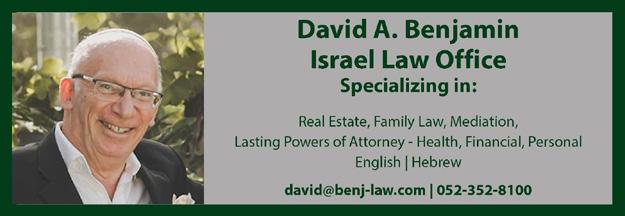
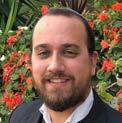 BY RABBI EZRA FRIEDMAN Director, The Gustave & Carol Jacobs Center for Kashrut Education
BY RABBI EZRA FRIEDMAN Director, The Gustave & Carol Jacobs Center for Kashrut Education
The prohibition
Our Sages decreed that kosher food cooked by non-Jews, called bishul akum, is prohibited for consumption. Early rabbinic authorities dispute whether this decree is relevant when non-Jews serve as maids or butlers in Jewish homes, suggesting two main reasons to be lenient. Firstly, consider the case of a non-Jewish slave who is owned by a Jew and consequently obligated to keep certain mitzvot, including Shabbat. Bishul akum does not apply to such a slave. Perhaps a non-Jewish servant has a similar halachic status. The second reason for leniency is a more psychological one. Since the basis for bishul akum is to prevent unnecessary mingling which could lead to intermarriage, perhaps where the cooking is not of a social nature, but rather the product of an obligatory or contractual relationship, it is not part of the decree.
According to Biblical law, food that is completely kosher and cooked by a nonJew is permitted. However, our Sages decreed that such food, even when cooked in kosher utensils, is prohibited for consumption. This prohibition is known as bishul akum. In the coming weeks we will discuss the parameters of this rabbinic prohibition, including the reasons behind the decree, when it applies, and the practical halacha for modern industrial kashrut.
Food is a very connecting element in every society. That is the basis behind the decree of bishul akum. Our Sages were very concerned about close relationships with non-Jews since intermarriage is a very severe transgression. The prohibition effectively limits Jews and gentiles dining with each other, although there is no specific prohibition against dining with a non-Jew per se. (See Rashi on Avodah Zara 31:b.)
need or an ex post facto situation.
maintain that the decree is based on this issue of closeness to non-Jews that could lead to intermarriage; this is the opinion of most early authorities. However, Rashi and others attribute a different reasoning to the prohibition of bishul akum, which is that non-Jews might mix non-kosher ingredients into the kosher food. In future articles we will discuss whether the parameters of bishul akum are based on both of these reasons or just one. However, it is clear from numerous sources that the danger of intermarriage is the main reason behind the prohibition (See Torat Habayit 3:7).
The decree is binding regardless of the reason
Rav Moshe Isserles [Rema], the leading Ashkenazic authority who wrote his interpolated commentary on the Shulchan Aruch, presents a seemingly perplexing ruling on this subject. At first, he writes that in case of need, or if the food was made already, one can rely on the opinion of Ramban that servants are not part of the decree of bishul akum. He then writes that in a case where a non-Jew is working in a Jewish home and there is a likelihood that the family will adjust the fire, (when a Jew adjusts or lights the fire, this mitigates the bishul akum prohibition), one can be lenient and a priori let a non-Jew cook for them (lechatchila).
Forbidding the non-Jew’s cooking would be enough to create an emotional distance such that families wouldn’t marry into each other.
Rabbeinu Tam (Tosfot Avodah Zara 38:a) and Rambam (Ma’achalot Asurot 17:9)
Most early authorities, including Rambam, offer no leniencies regarding the situation in which the non-Jew is cooking, and generally don’t distinguish between a slave, a servant, an employee, and a non-Jewish acquaintance. The Shulchan Aruch rules like those authorities (YD 113:4). Later authorities (see Ta”z and theVilna Gaon on YD 113:4) add that the Shulchan Aruch is stringent even in a case of
Many authorities try to explain Rema’s wording and final ruling. The Shach (113:7) questions how Rema first relies on the Ramban, since in the time of Rema there were no longer non-Jewish slaves in the halachic sense, rather they would work for a period of time with wages, not as actual slaves. He then adds that Rema’s “leniency” if a Jew adds to the fire seems irrelevant, since that case would already not be considered bishul akum!
Among the numerous explanations of Rema’s ruling (see Shach YD 113:7), there are
Since the transgression of intermarriage was the primary concern behind our Sages’ decree, their goal was to powerfully discourage the possibility of developing emotional connections to non-Jews that could lead to intermarriage either in that generation or the next. Accordingly, early authorities discuss whether the prohibition of bishul akum still applies even in situations where intermarriage is not technically possible. For example, Rashba, in his responsa (1:248), examines the case of food cooked by a priest. Being that Catholic priests do not marry nor do they have children with whom to intermarry, is it permitted to eat food cooked by a priest even though the reason for bishul akum seemingly does not apply to
two that fit particularly well with the wording and logic of Rema. The Aruch HaShulchan (113:4), among others (see Chochmat Adam 66:7), explains that all these factors are needed in order to understand the ruling:
1) The non-Jew must have some type of servitude as a cook; 2) The cooking must take place in a Jewish home; and 3) The fire must be adjusted by a Jew. In a previous article, we cited the ruling of the Tosafist, R. Avraham Ben David, who maintained that when a nonJew cooks in a Jew’s home or establishment, there is no bishul akum. The Rema does not accept this ruling, since non-Jewish butlers are not similar to the slaves of our Sages. However, in a case where there is some type of servitude or compulsion, such as a butler having a contract for a year which can’t be broken, or a prisoner in a jail, AND the home is of Jewish ownership, one can be lenient in an ex post facto scenario or perhaps in dire need.
The OU Israel Gustave & Carol Jacobs Center for Kashrut Education was created to raise awareness and educate the public in all areas of kashrut. Rabbi Ezra Friedman, Deputy Rabbinic Administrator for OU Kosher Israel is the Center's director. him? Rashba answers that we have a rule regarding rabbinic decrees: even when the reason does not apply, the prohibition still stands. This is a necessary element in every rabbinic prohibition. Otherwise, Rashba explains, people could rationalize and find reasons why any decree should not apply in their particular situation. Accordingly, Rashba concludes that even food cooked by a Catholic priest has the prohibition of bishul akum. A similar ruling is made by Ramban (Avodah Zara 35:a) regarding non-Jewish royalty who, because of their stature, are prohibited from marrying Jews. He maintains that the fact that the non-Jews are royalty is irrelevant, and that the decree of bishul akum stands regardless of the reason behind it. Taz (YD 112:1) , Shach (YD 112:4) and Pri Megadim (YD 112:1) cite these rulings as axioms of the laws of bishul akum.
Other examples

gentiles, even if the ingredients and utensils are kosher.
The reason cited by most authorities is the risk of intermarriage.
Even in cases with virtually no risk of intermarriage, the food is still prohibited, including non-Jewish royalty, priests, young children, and non-Jews from distant lands. Kashrut
is similar to the Aruch HaShulchan but with one very important difference. According to the Shach, in the ex post facto leniency cited initially by the Rema, the primary factor is the Jewish home. The Shach explains that even in a case where there is no slavery involved, Rema relies on the ruling of R. Avraham Ben David [disregarding the employment status of the non-Jew]. Rema decided to mention the ruling about the non-Jew’s status, even though it seems out of place, since Shulchan Aruch there is talking about the halacha of a non-Jewish slave.
050-200-4432

077-2050015
052-2678749
golanechasim@gmail.com
Old Katamon:
Old Katamon: 4-room
Meir Golan
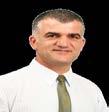
RASCO: new 4 room apartment, 95m, master suite, elevator, balcony, very nice view 2,950,000 NIS
elevator, parking, 3,290,000 NIS
Meir Golan
ARNONA: 4-room apartment, 90m, beautifully renovated, master suite, balcony, storage, Shabbat elevator, private parking 3,250,000 NIS
Old Katamon: Spacious 3-room apartment in a very quiet street, 75 sqm, sukkah balcony facing a green and pastoral view, 3 exp. Shabbat elevator, private parking storeroom, 2,690,000 NIS
Later authorities discuss similar cases where the logic behind bishul akum may not apply. Responsa Shevet Kehati (6:273) rules that even food cooked by a non-Jewish child is considered bishul akum, despite the fact that the chances of marriage seem remote. The same is true for food cooked in a faraway country where Jews cannot travel -- bishul akum still applies.
The additional third condition creates a lechatchila ruling, meaning one can rely on it from the outset. In a case where there is servitude (even partial), a Jewish home and a Jewish member of the household will adjust the fire, one may initiate such a scenario a priori and not be concerned about bishul akum . It seems that in a case where a Jewish member of the home normally stokes the fire to make sure the food is cooking, even if it did not happen, one may still be lenient from the outset (see Chochmat Adam 66:9).
In summary:
Our Sages prohibited food cooked by
Another explanation found in the Shach
A direct practical difference between the Shach and the Aruch HaShulchan is the case of non-Jewish workers in modern, Jewish-owned establishments, such as restaurants and hotels. Although workers in such establishments are in no way obligated to work there and can quit as they please, according to the Shach, in a case where food was already produced it is permitted to consume as long as the establishment is owned by a Jew. The Aruch HaShulchan would disagree and even in an ex post facto scenario the food would be prohibited, based on his opinion that both conditions are required, i.e. Jewish-owned and at least a minimal servitude. Later poskim rule like the Aruch HaShulchan, and as such, food cooked by non-Jewish workers in Jewish-owned hotels and restaurants is subject to the decree of bishul akum, even in an ex post facto situation. (See responsa Teshuvot VeHanhagot 1:439; Levushei Oz, p.539; HaHalacha BaMishpacha, p.203.)
BAKA: New 4 room apartment in a new building, 88m, master suite, storage, Shabbat elevator, private parking, 3,950,000 NIS
RECHAVIA: 4-room apartment, 92m, Suka balcony, Shabbat elevator, fully accessible, private parking, storage 4,400,000 NIS
ARNONA: 5-room apartment, 120m, balcony, elevator, fully accessible, private parking, storage 4,350,000 NIS
BAKA: 5-room garden apartment, 140m, master suite, private parking, storage, full of light, airy, nice garden, 5,000,000 NIS
OLD KATAMON: Spacious new 5-room penthouse, 155m, terrace, great panoramic view, underfloor heating, Shabat elevator, 2 parking, + rental unit, 8,900,000 NIS
FOR RENT: BAKA: nice 4-room apartment, 82m, beautifully renovated, master suite, air conditioners, balcony, 2nd floor, elevator - fully accessible, storage, 8,000 NIS
• Early authorities dispute whether household servants are included in the decree of bishul akum.
• Shulchan Aruch rules that all non-Jews, regardless of their occupation or professional relationship, are included in the decree of bishul akum.
• Rema is lenient in certain cases when a servant or maid is cooking in a Jewish home.
• Non-Jewish workers in hotels, restaurants and factories are included in the decree of bishul akum, even in an ex post facto case.




Place orders until April 14
Get 5% off when you place order by April 10







Smart Sky specializes in advancedcustom shading systems suitable for all seasons.
Our systems offer a variety of enclosing solutions for expanding your living areas, balconies, pools, shuls and businesses.
Smart Sky's professional Jewish installation team use only optimum quality and high grade imported materials.

This time do it the way!


This Shabbat we will read Parshat Parah, the third of the four special parshiot which surround the days of Purim and Pesach.
Parshat Parah comprises the opening verses of Parshat Chukat,which introduce us to the mystical elixir for impurity, the mysterious inexplicable concept of the para aduma - the red heifer.
The Chasidic Masters saw in these pesukim not only the halachic remedy to purify those who have become ritually impure, but also an eternal message regarding the relationship between the Jewish People and the Torah Hakedosha.
One of the perplexing aspects of the Para Aduma ritual, is that the Kohanim who were involved in preparing the ashes of the para aduma became tamei - impure through the process. In preparing the mystical compound which would return others to purity, they in turn became tamei.
The Avodat Elazar of Koshnitz zy’a, offers a keen and original interpretation to explain the hidden significance of this peculiar phenomenon based on the opening verse- Zot Chukat HaTorah- This is the inexplicable
Do you have a life insurance policy you:
• No longer want?
• No longer need?
• Can no longer afford the premium?
• Could you use extra money instead of keeping your policy?
I can guarantee that if you qualify with the underwriting process I can get you more money than if you cash it in with the company.
Please contact Moshe Russell at: Buymypolicy32@gmail.com
principle of the Torah.
This verse, the Rebbe explained, is not only describing the mysterious nature of the para aduma, but also teaching us a very fundamental idea about Torah itself. Like any remedy, when channeled appropriately it can transform and cure and bring complete healing, or if chas v’shalom it is misused, taken out of context and applied inappropriately then it can bring further deficiency and harm.
The Netivot Shalom, the Admor of Slonim zy’a offers a different interpretation of our verse Zot Chukat HaTorah. Our verse, explains the Rebbe, is not only introducing us to the para aduma as a vehicle to restore purity, but also an eternal message which applies even now in the absence of the Beit HaMikdash and of the para aduma. Zot Chukat HaTorah- In our current state, without the Beit HaMikdash and with no para aduma the vehicle for we Jews to experience some form of a return to purity is by immersing ourselves in the study of Torah- Zot Chukat HaTorah!
The Bat Ayin, the Rebbe of Avrich zy’a, similarly points out that the para aduma is on some level meant to be a tikkun (fixing/ correction) for the impurity introduced into the world through the Cheit HaEgel (The Sin of the Golden Calf). The Rebbe taught:
The Toldot Yaakov Yosef, zy’a, wrote that Cheit HaEgel impacted future generations, and that the word egel is an acronym for the words arayot (illicit behavior), gezel (theft) and lashon hara (inappropriate speech).
So too, the tikkun for all of these,as represented by the para aduma, also comprises an acronym for the word egel- Avoda, Gemilut chasadim and Limud Torah...
The Bat Ayin taught that the para aduma not only provided a metaphysical healing for those who had come into contact with impurity, but also came to teach us how to overcome the impact that resulted from the Cheit HaEgel.
Yehi Ratzon, as we begin over these next few weeks to prepare ourselves spiritually and emotionally for the incredible yom tov Pesach, may we merit that our limud Torah, should indeed bring purity to our minds and hearts, and that we soon merit to experience this year to partake of the korban Pesach purity, to experience the building of the HaMikdash, and the return of all its associ ated sacred and wondrous rituals.
be ready for every thing
Pick up your copy and be prepared for every occasion and Jewish life cycle event.
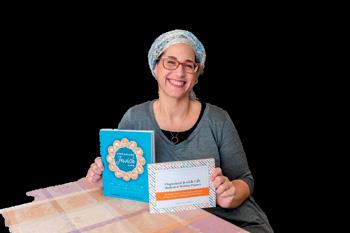

Checklists to help you prepare for every event
Companion Shabbat & Holiday Planner
Makes a great gift
online at amazon.com or in Israel exclusively at
@BALAGANBEGONE
organizedjewishlife.com

A small Sefer Torah with its own Aron Kodesh is available to shiva houses or for any other necessary occasion on a temporary free-loan basis.
If needed call Uri Hirsch 0545513173

ENGLISH SPEAKING LAW FIRM
Orit Madar, Adv.
Family Law and Mediation Divorce, Child support, Custody Inheritance & Wills
Yariv Madar, Adv.
Bodily Injuries, Medical Malpractice Civil Litigation
10 Hillel St , Jerusalem | 36 Dam hamkabim st , Modiin 02-6255592, 050-3202909
Madar@netvision net il
 BY RABBI MOSHE TARAGIN R am, Yeshivat Har Etzion
BY RABBI MOSHE TARAGIN R am, Yeshivat Har Etzion
Throughout our history there have been periods of fervent halachic commitment and other periods, during which halachic fidelity declined. Human nature is weak and a just few weeks after receiving the Torah we committed the horrific sin of avoda zara. At Har Sinai we enthusiastically declared our loyalty by declaring “na’aseh v’nishmah”, but throughout our history we weren’t always completely faithful to the na’aseh part of this pledge.
However, until recently, even Jews of diminished halachic commitment still maintained strong Jewish identity. Powerful communal bonds and enforced cultural insularity assured that Jewish identity would remain stout within Jews from across the religious spectrum. For much of Jewish history, it was almost impossible to walk away from Jewish identity and disappear into broader society.
In the modern era, a range of factors has caused widespread erosion of Jewish identity. Millions of Jews have become completely unaffiliated or very loosely affiliated with our heritage and history. To many, it appears as if large sections of our people have become irrevocably lost to history.
NETZACH YISRAELBelief in Netzach Yisrael and the eternity of our people also demands belief in the eternal nature of each Jew. Despite significant identity
erosion, each and every Jew, as far as they seem to wander, still harbors inherent and deep-seated Jewish identity which, one day, will be amplified and fully reconstituted.
That day has come. Part of the reconstitution we envision is already beginning. The war has awakened Jewish identity and Jewish belonging in Jews who were, previously, unconnected to anything Jewish. Venomous antisemitism and our existential battle for our Land and our peoplehood have ignited a renaissance of Jewish identity and a renewed interest in the expression of Jewish identity. We knew it would happen, we just didn’t know how it would happen and when it would happen. Our nevi’im already predicted this. The Pew studies predicting the extinction of Jewish identity were premature. Statistics don’t generally include prophecy in its surveys and algorithms.
Yeshayahu, the great believer in Netzach Yisrael, coined his famous prediction about a great shofar beckoning lost Jews home to Yerushalayim:
םירצמ ץראב םיחדנהו רושא ץראב םידבאה ואבו םילשוריב שדוקה רהב ’הל ווחתשהו
In this buoyant vision, Yeshayahu speaks of two groups of Jews: those lost in Assyria and those sidetracked in Egypt. Evidently, there
are many varieties of lost Jews. They all hear the same shofar sound, but they return to Jewish identity along different routes.
Most commentators claim that the “lost Jews of Assyria” refer to the ten tribes. In the 6th century BCE, the Assyrian kingdom conquered the entire Northern kingdom of Israel, evicting 10 of 12 tribes from our homeland, scattering them within foreign populations. Tragically, in an instant, millions of Jews became historical casualties, having been completely severed from Jewish history. As the past 2500 years of Jewish history and masorah have bypassed them, were they to be discovered today they would bear little resemblance to us. The gemara in Sanhedrin (110b) even debates whether they will be reinstated in the Messianic era.
In addition to the actual 10 tribes who were dispersed by Assyria there were many other “lost Jews of Assyria” who met a similar fate. Jews were forcibly converted to other religions and detached from Judaism through intermarriage. Sadly, most of these Jews hardly know that they are Jewish, and we will have to wait for Moshiach and for the heavenly shofar to see if and how they are rejoined with our people.
Though “lost Jews of Assyria” will have to wait for Moshiach, many Egyptian Jews are already returning home. Of course, the phrase “sidetracked Jews of Egypt” or the “nidachim mei’eretz Mitzrayim” is a metaphor and doesn’t only refer to Jews who actually live in Egypt (of which there are only a few dozen). The “diverted Jews of Egypt” refers to different groups of Jews, whose historical Jewish identity has been sidetracked
The Torah specifically warns against returning to Egypt in part, because of the natural nostalgia we felt for a country which hosted us for over two hundred years. Despite enduring brutal slavery, we still yearned for our native Egyptian culture. How else to explain our bizarre craving for Egyptian fish and vegetables, even though we enjoyed daily heavenly manna?
Beyond the strong pull of nostalgia, Egypt attracted us because it was such an impressive and competing culture. Egypt was always an epicenter of scholars, philosophers, artists, and mathematicians which produced monumental achievements in architecture, art, literature, science, astronomy, and geography. The Greek and Roman conquest of Egypt beginning in 332 BCE produced a blending of two cultures and a rich intellectual environment best epitomized by the vibrant city of Alexandria, which became the academic center of the ancient world.
Hashem knew His nation of literate and intellectual people would be ineluctably drawn to this flourishing Egyptian culture and therefore warned us against return and against assimilation in Egypt. No Jews were ever lost to Assyria due to its attractive culture or due to its intellectual character. Assyria was a military state, not a center of science or progress. Jews in Assyria were lost because of population displacement. The concept of “lost Jews of Egypt” however, refers to a process whereby the Jewish imagination becomes sidetracked by a competing culture with conflicting values.
In the modern period millions of Jews were sidetracked by a modern Egypt- namely by a
modern society with attractive and sometimes competing value systems. Unable to reconcile modern values with traditional faith and ritual, many Jews became alienated from Judaism, while dedicating themselves to building a modern multicultural city of democracy, equality, and tolerance. They became sidetracked by “other” values which, at least in their minds, were dissonant with Judaism. These competing values occupied their personalities and displaced Jewish identity.
This war is a wake-up call. Maybe it isn’t the great shofar of Yeshayahu, but it certainly is a wake-up call. It has exposed the underbelly of modern culture, and the distortion of values, many of which have been hypocritically weaponized to savagely attack our people, our state, and our just war. Hopefully, the “lost Jews of Egypt” will see through the façade of modern Egypt and begin the long road home.
Historically, the first Jews who relocated to Egypt fled the Babylonians in the final stages of the destruction of the first Mikdash, in 586 BCE. The Babylonians demolished the Mikdash and established a Jewish puppet government in Yerushalayim, directed by Gedalya ben Achikam. When Gedalya was assassinated, the remaining Jews, terrified of Babylonian retribution, fled to Egypt. Frightened for their lives, they moved to Egypt.
Sidetracked “Jews in Egypt” then, is also a metaphor for Jews who flee from Jewish identity because of fear of violence and hatred. Running away from violence and persecution is not just a physical escape but a mental transformation. Throughout our history many Jews, when faced with hatred, violence and religious persecution just ran away – geographically and emotionally. So many Jews, especially in the
last two hundred years, have had their Jewish identity beaten out of them by history. Thousands of years of hatred, and discrimination capped off by the nightmare of the Holocaust caused many Jews to simply check out of their Jewish identity.
Hopefully, renewed Jewish pride and our current heroic efforts to defend good against evil and to protect humanity from its darker demons will help frightened Jews trace their way back to our people. Hopefully, their fear will be replaced by faith, and their terror by Jewish pride.
But Jewish identity isn’t binary. Even Jews with healthy Jewish identity often hear the sound of the shofar and the sound of Jewish history calling. They comprise a different group of “Jews of Egypt”. The initial Jewish community in Egypt was composed of refugees who ran there for their lives. In time, however, the Jewish community in Egypt became well established as a successful and thriving community. It is one of the oldest Jewish communities formed outside of Israel and hosted such great scholars as Rabeinu Sa’adia Gaon, the Rambam, and the Arizal Hakadosh just to name a few.
The Jewish community felt so comfortable that they constructed a pseudo Mikdash called the Mikdash of Chonyo which they saw as a parallel Mikdash to the real one in Yerushalayim. The gemara describes a shul in Alexandria so large that hand signals were necessary to inform the audience of when to answer “amen”.
This war is also beckoning that group of “Jews of Egypt”. Jews around the world who live in modern-day Alexandrias, who have built prosperous and vibrant Jewish
communities. They may not need to, or want to immediately return to Israel, but this war has begun to call them back. Back to Jewish history and back to Jewish destiny. Back to the ancient echo of our people and Land, which is deeply lodged within Jewish consciousness, and which reverberates in the heart and soul of every Jew and resonates within every recital of Shema.
They are starting to return from Egypt. One day I”yH they will return from Assyria as well.
Gemach for Chatan and Kalla:
Meals for wedding and Sheva Brachot at cost
Eida Hachareidis Hechsher
Tel:052-633-1744
gadgadood@gmail.com

New Price - Rechavia
When Avraham addresses the people of Cheit, trying to “Ger V’Toshav Anochi Eimachem” (23:4) “A Stranger and This seems to be a contradiction. If one is a stranger than is no longer a stranger. What did Avraham mean?
Ground floor completely accessible, spacious & airy, 4 rooms, 10m mirpeset, parking, tons of potential, 2 entrances so the 3rd bedroom can be used as a clinic /office or studio unit. 3.97m shekel
For Rent in Rechavia
Rashba street, 2 rooms, 50m, 1.5 bathrooms, mirpeset, small building, 12 stairs up. available from April.
5670 NIS/month
The Magid of Dubno (Jacob ben Wolf Kranz 1741-1804) this tense situation in order to, both, state his truth and be said, on the one hand, “I am a Resident’ due to G-d’s promise need your agreement to purchase a plot. In other words, Avraham “strangers”, while they understood him as saying that “they”
For Rent in Katamon
The peace was kept, and Avraham remained true to his Shabbat Shalom
30m studio on Bustani street, ground floor, small garden, for independent people over 55. 3500nis/month incl va'ad bayit & heat.

12 TORAH TIDBITS 1440 / CHAYEI SARA 5782
FREE COUNTER-MISSIONARY Videos • Parsha Insights • Booklets • Counseling
Rabbi Bentzion Kravitz • rabbikravitz@JewsforJudaism.org

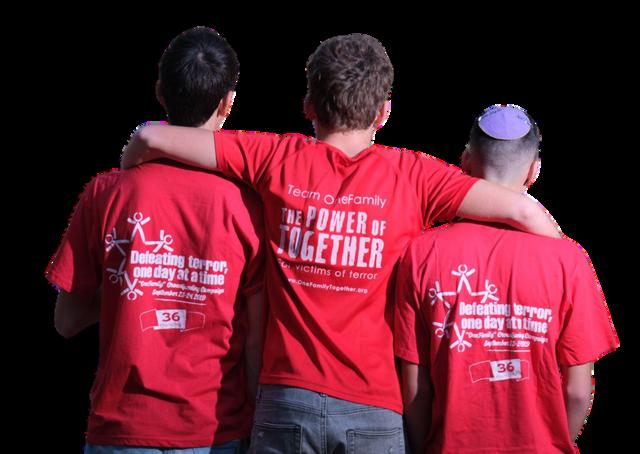
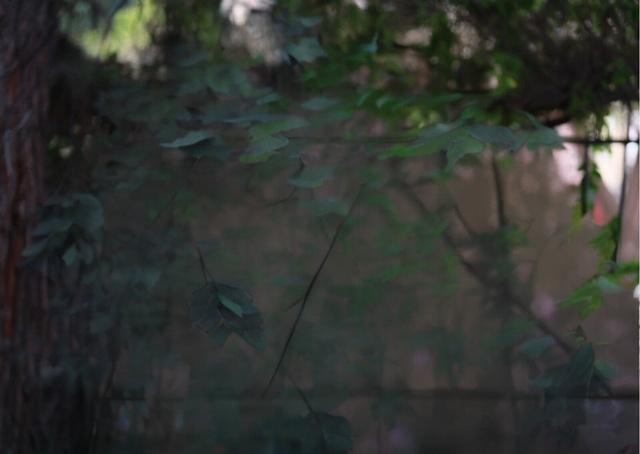
 EDITOR, TORAH TIDBITS
EDITOR, TORAH TIDBITS RAV, THE JERUSALEM SHUL - BAKA, JERUSALEM
EDITOR, TORAH TIDBITS
EDITOR, TORAH TIDBITS RAV, THE JERUSALEM SHUL - BAKA, JERUSALEM
In Parashat Tzav, we are reintroduced to a prohibition already mentioned in the previous parashah, Parashat Vayikra: not to consume the blood of an animal. The Torah commanded us “do not consume any blood” (Leviticus 3:17), and now it adds that the prohibition applies to birds and animals alike, and that the transgression is subject to the very severe punishment of karet, spiritual excision (Leviticus 7:26-27). And this is not the last we hear of this prohibition in the Torah. Why does the Torah give so much focus to something from which we naturally recoil?
The Rambam posited that there is nothing natural about it. Eating or not eating blood is culturally conditioned. In pagan antiquity, common wisdom had it that consuming animal blood enabled one to commune with spirits and learn the future from them.
Characteristic of his overall approach to many mitzvot, the Rambam reasoned that this precept was designed to combat that idolatrous practice so prevalent in the biblical era and beyond. “The Torah, which is perfect in the eyes of those who know it, sought to cure mankind of these lasting diseases and forbade the consumption of blood.”1
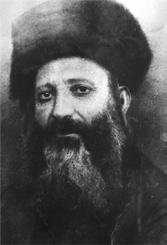

The other celebrated Moshe of the era, the Ramban, often took issue with the Rambam’s historicization of the mitzvot. In this case, he believed that the reason for the prohibition can be gleaned from the verses themselves: “Only be strong not to eat the blood, because the blood is the soul” (Deuteronomy 12:23), and “I shall turn My countenance to the person who eats the blood… because the soul of the flesh is in the blood” (Leviticus 17:10-11). The Torah locates the animal’s soul in the blood. This soul explains why the animal has “the sense to flee from danger, follow pleasure, recognize familiars and love them like dogs love their owners.” All souls ultimately belong to God, and therefore we may not consume it. At most, it can be put to human use by having the blood atone for people on the altar.2 1.
This helps explain why we cover the blood of undomesticated animals and birds. The Sages say that after Kayin murdered Hevel in an unpopulated world, it was the birds and wild animals that covered his body with earth, preserving his human dignity through burial. For this they were rewarded with having their own blood covered after slaughter accompanied by a blessing.3 Animals exhibit emotional awareness, and in this case responded to the death of a human being. The covering of the blood is equated with the respect for life and the sanctity of all living beings. When we cover the blood of an animal, we are also expressing tenderness and respect for a life taken away.
Abarbanel followed in the footsteps of the Ramban and added that even when Noach and his sons were permitted to eat animals, they were forbidden from eating ever min ha-chai, a limb from a live animal. A limb severed prior to slaughter is forbidden to all human beings—not just Jews—because its consumption expresses heartlessness with respect to the animal. From this, Abarbanel extrapolates that eating blood is a show of contempt for the animal’s life: “And if a person eats the meat and the blood, it would be as though he ate a limb from a live animal, as though he ate a live animal with its soul as if it were alive, which is something very disgraceful.”4
Rav Avraham Yitzchak Hakohen Kook joined his predecessors and added a further contemplative layer with an eye towards the future. In an ideal world, humanity would be vegetarian, and humanity would live in harmony with animals. But reality is imperfect, so Judaism permits eating meat. Even so, 3. Genesis Rabbah, 22:8. 4. Abarbanel on Deuteronomy 12:20.
humanity must remember that this situation is not ideal. In that spirit, Rav Kook thought that we cover the blood to symbolically hide our shame. Our unhealthy desire for meat and our spiritual weakness has led us to extinguish a life to satisfy a primal desire. Deep down, we hope that one day we will possess greater sensitivity and compassion. The intricate laws surrounding kosher slaughter are not only in place to ensure a swift and merciful end; they serve as reminders “that we are not dealing with a free resource that is merely an automaton, but a sensate, living animal.”5 They make us conscious of our fallen state, bringing us back to the beginning of time when animals were not permitted for man’s consumption.
5. Chazon ha-Tzimchonut ve-ha-Shalom, ch. 11.
Rabbi Goldscheider is the author of the newly published book ‘Torah United’ (OU Press), featuring divrei Torah on the weekly parasha from Rav Kook, Rabbi Solovetichik, and the Chassidic Masters.
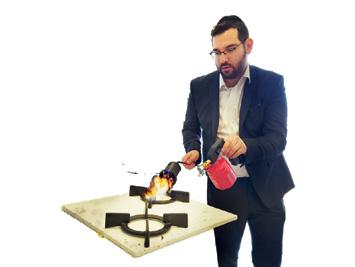

תמשנ יוליעל
ל"ז ןמצלז לאיזוע םהרבא ןב םירפא לאוי
Question: I understand that if one eats a sufficient amount of food whose beracha is Mezonot (=mezonot), he recites Hamotzi and Birkat Hamazon (= BHM ) on it. Do bread and mezonot combine to comprise the required amount when each separately lacks a shiur? How about different types of mezonot, e.g., cake and oatmeal?
Answer: The gemara (Berachot 42a) says that for pat haba’ah b’kisnin (=phbbk), food that shares qualities with bread but is not normal bread, whether one recites Hamotzi or Mezonot on it depends on whether one is koveia seuda (sets a meal) on it. When phbbk gets Hamotzi, one also recites BHM on it (Shulchan Aruch, Orach Chayim 168:6) and washes on it (ibid. 158:1).
To be a candidate for bread status, food must be made from “the five grains” and be baked or look like bread. (Spaghetti is not phbbk or treated like bread no matter how much of it one eats – see ibid. 168:10). Various characteristics determine whether foods that pass these tests are bread or phbbk (ibid. 7).
A k’zayit of bread suffices to require BHM, (ibid. 9), but if one eats less, phbbk cannot take it over that threshold, because objects
with different shiurim do not join together to reach the shiur (see Shabbat 76a). However, if one was slightly short of the shiur needed for phbbk, the bread, with its smaller shiur, can complete the bigger shiur needed for phbbk (ibid.). Different types of bread combine for a k’zayit and types of phbbk combine for kevi’at seuda. (Arguably, elevating phbbk to bread status must focus on one food, but I have not found sufficient basis for this in the sources.)
The Magen Avraham (=MA) went much further in combining things, claiming that it is enough that the meal with phbbk is a real meal. He writes: “If he set his meal on [phbbk], even though he ate with it meat and other things and if he had eaten [that amount he had of] it by itself he would not have been satiated from it, he still recites Hamotzi and BHM.” His approach emanates from the gemara (ibid.) and Rishonim who describe eating of these semi-breads as that which is done at a normal meal. After all, a normal meal includes foods other than bread. So while no amount of cooked or fried grainbased food could get Hamotzi, oatmeal that you mentioned and many other things one has as part of a meal with, say, a boreka, can, according to the MA, change the boreka’s beracha to Hamotzi.
Eretz Hemdah, the Institute for Advanced Jewish Studies,
by Rav Yosef Carmel and Rav Moshe Ehrenreich, founded by Rav Shaul
zt”l,
prepare rabbanim and dayanim to serve the National Religious community
the Israel
abroad. Ask the Rabbi is a joint venture of the OU, Eretz Hemdah, and OU Israel’s Torah Tidbits.

I must warn you, though, that it is very difficult to apply the matter of being koveia seuda on phbbk. First, there is a machloket whether the amount of kevi’at seuda to eat depends on the individual’s satiation or how much most people eat (see opinions in Rosh, Berachot 6:30). Another regarded approach sets the amount at the size (weight/volume?) of three or four eggs. This is a cutoff point regarding certain halachot of serious eating, even though it does not satiate most people (see Mishna Berura 168:24).
There is also a machloket whether we accept the MA to include other foods eaten at the meal to reach kevi’at seuda – the Mishna Berura (ibid.) accepts him; the Birkei Yosef (OC 168:6) and Aruch Hashulchan (OC 168:17) disagree. There are also several permutations and opinions about how broadly to apply the MA. Is it only for foods that are eaten with the mezonot, e.g., crackers and cheese, a sandwich on a “mezonot roll” (see discussions in V’zot Haberacha 4:3; Netivot Haberacha 57)? Is it only when the mezonot and other

foods are eaten at the same time (Shemirat Shabbat K’hilchata 54:(132) in the name of Rav Auerbach)? Rav Moshe Feinstein (Igrot Moshe, OC II, 32) has an expansive approach. While the MA assumes the phbbk must play a major part of the meal, Rav Moshe reasons that today’s trend to eat less bread at meals than was once standard lowers the amount of phbbk needed as well.
Many poskim assume there is a difference between l’chatchila and b’di’eved, i.e., avoid meals with significant phbbk and no bread due to the huge gray area. Nevertheless, common practice is to eat non-bread meals without Hamotzi/BHM (see Avnei Yashfeh II, OC 20; Teshuvot V’hanhagot I:182).


In an effort to solve Israel's physician shortage, Israel’s Ministry of Aliyah and Integration and Ministry of Health, have chosen Nefesh B'Nefesh to partner in creating an international program to streamline the immigration process for medical professionals, ensuring their ability to integrate into Israel’s medical workforce upon arrival in Israel.
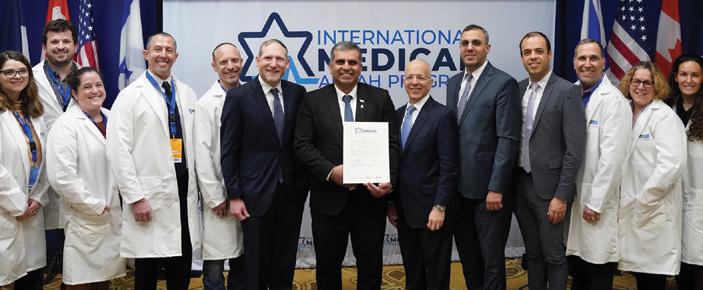



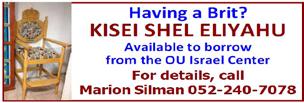


Last time we discussed the importance of PUAH’s halachic supervision and how it is essential to enable religious Jewish couples to access fertility treatment. PUAH’s supervision bolsters the couple’s confidence that there will be no mistake during the entire process, and they become calmer patients, who are better patients with a higher success rate.
However, as we saw last time, during the Covid 19 pandemic, the laboratories initially expressed concern that the presence of the supervisors in the lab potentially increased the chances of infection. PUAH was able to adapt our own guidelines to ensure that the supervisors could continue to work following the highest halachic standards, as always, without compromising the success rates, or adversely affecting the integrity of the fertility procedure.
At that time, it was suggested that a potential solution was using cameras strategically located throughout the fertility laboratory.

The supervisor could be located outside of the clinic, for that matter, she could still be at home, and would be able to clearly observe the entire process.
While this solution was not eventually employed, since it was deemed unnecessary, it did give rise to a certain amount of discussion as to whether this could be considered a sufficient level of observation in halachic terms.
This discussion has resurfaced recently since one of the major fertility facilities in Israel redesigned their entire laboratory in order to create a much more sterile environment. This has been done in many centers worldwide and has improved their operation and eventual success rates.
The air is carefully controlled and the embryologists have to wear special clothing, they cannot use perfume or makeup and must be prepared very scrupulously before they can enter the lab. Even the doctors are not granted access to the laboratory out of concern for contamination.
These new measures, of course, raise the question of supervision and its implementation. It is not feasible for the supervisor to be present in the lab and maintain the required elevated levels of sanitation for the entire time that she needs to supervise.
One practical suggestion was that the clinic set up a comprehensive system of high-definition cameras. The supervisor can be located in a nearby room and she can closely monitor the procedures without having to be physically present.
This raises a myriad number of halachic questions; can supervision be relied on if the supervisor did not see with her own eyes? Is there a halachic difference between watching a live broadcast as opposed to seeing a video playback post facto? How does this compare with other types of supervision, such as food preparation, where cameras have been used?
More on this next time.
Walking down King George St. in Jerusalem and want a cold bottle of water?
Come help yourself to a bottle at 52 King George.
In loving memory of Yoni’s wife
Tziporah a"h, a true Eishes Chayil, always full of chessed, kindness and laughter, and brought life and strength to so many people, that she touched! She was like Aron, who loved peace and pursued peace.

Yoni thanks Hashem for having the opportunity of having Tziporah in his life, to learn of her caring, patience and happiness, to overcome her challenges. May Tziporah's Neshama be a light onto the world, in a time of darkness, and may her Neshama shine to Gan Eden. Yoni misses Tziporah with tears in his eyes, as Hashem gave him a gift, a crown jewel, now he returns her to Hashem.
With thanks and Toda. Love, Yoni
To help refill the supplysend tax deductible donations for Be’er Tziporah a"h Bottled Water Gemach to Chabad of RechaviaRabbi Yisroel Goldberg email
Rabbi@JerusalemChabad.org
02 800-1717
www.JerusalermChabad.org/DonateShekels







Rookie: Sherut Leumi in Israel, which translates as National Service, was established as an alternative to mandatory military service. It serves several valuable purposes.
Giving fosters love. The Hebrew root Hav, which is connected to ahava, love, means to give. When we give to someone or something, we show our love, and our love grows in turn. Consider the giving of care to a newborn baby that solidifies parental love and concern.
Giving is an integral part of gratitude. Psychologists tell us that gratitude is an essential element of living a more appreciative, emotionally rich life. National service demonstrates appreciation of the land we live in.
Giving back and paying forward help the human psyche to understand that we are not simply entitled, but need to see ourselves as partners in the social contract. Society gives to us, and we must also give to society.
Doing Sherut Leumi exposes the volunteer to segments of Israeli society he/she may never have encountered before. Working side by side promotes understanding, sensitivity and acceptance.
No one should see him/herself as yotzai min haklal, out of the ordinary. In the Passover Haggadah, about the wicked son, we say “and since he took himself out of the community,
he denied the fundamental principle.” Fundamental principle can mean either the axioms of society, or the ultimate Fundamental Principle—the Almighty.
Heshie: Most of the people who do national service instead of Army service in Israel are women from the religious Zionist community. It is much easier to maintain standards of “tzniut”, including modest dress, while doing National Service, than while serving in the IDF. Interestingly, there is an increasing number of men doing national service as well.
Today there are growing numbers of Haredi men serving in IDF combat units. But on a relative scale, the numbers are small. National service is a viable alternative to military service. It seems reasonable that every citizen should feel responsibility to the society that enables them to live freely and practice their religious beliefs.
Moshe Rabeinu told the tribes of Reuven, Gad, and Menashe who wanted to remain on the east side of the Jordan River that it was unseemly that their brothers will fight for the land west of the Jordan while they relax (or make money)at home on the east side. At minimum, no one should be exempt from making some physical contribution of self to their country
What kind of work can be part of Sherut Leumi?
Rookie: Someone who opts for national service can choose from many options that suit their interests and temperament. Many lines of work are appropriate: work in schools, youth movements, hospitals, emergency services, nursing homes, kids at risk, special education and special needs, vulnerable elderly, development towns, internal security, immigrant assistance, museums, holocaust remembrance and many other options. In year two of service, which many opt for, young people may choose to serve in Jewish communities abroad, like the US, the UK, Australia, Russia, and others. Who should do Sherut Leumi?
Rookie and Heshie: We are of similar minds on this question. We feel strongly that EVERYONE who lives in Israel and benefits from having a Jewish state and a Jewish army to defend that state should give back in the form of service. Certainly, military service is National Service in the fullest sense of the word. The men and women who serve in the army, whether in combat, intelligence, desk jobs or support positions, are contributing to the defense of Israel against a broad spectrum of enemies.
But even those who will not, cannot, or choose not to do army service, can and should find an alternate form of service to the nation for at least a year or two. We are not minimizing the importance of dedication to Torah study. But just as the Yeshivot Hesder manage to produce young men who excel at Torah and also serve the country alongside their secular counterparts, we believe that there has to be a way for EVERYONE to give back to this country that ensures and safeguards
the existence of the Jewish people.
Similarly, we feel strongly that the United States of America should also require mandatory national service. This might deflect the horrible trend of disrespecting the US flag, taking a knee when the US national anthem is sung at sports events, desecrating monuments, accusing the US of being founded on principles of racism and other demonstrations of disdain and ingratitude for all the untold opportunities and the good that the US has bestowed upon its citizens, resident aliens, and the world at large.
Heshie: National service is an important statement of appreciation and loyalty to a country which gives us opportunity. I strongly regret not being compelled to give something back to America after I completed college. Much personal benefit would have come had I been more altruistic about giving to my country at that stage of life
A recent oleh, Heshie Billet is Rabbi emeritus of the Young Israel of Woodmere and a past President of the Rabbinical Council of America. A recent olah, Rookie Billet retired from a long career as a Jewish educator, principal, synagogue rebbetzin, and yo’etzet halacha in the US.
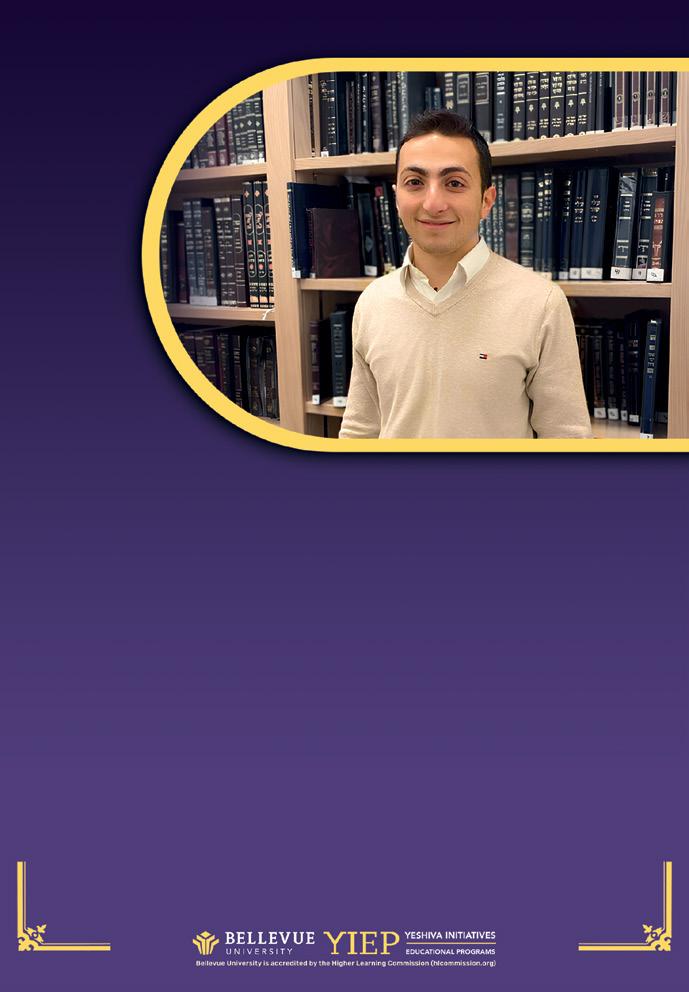



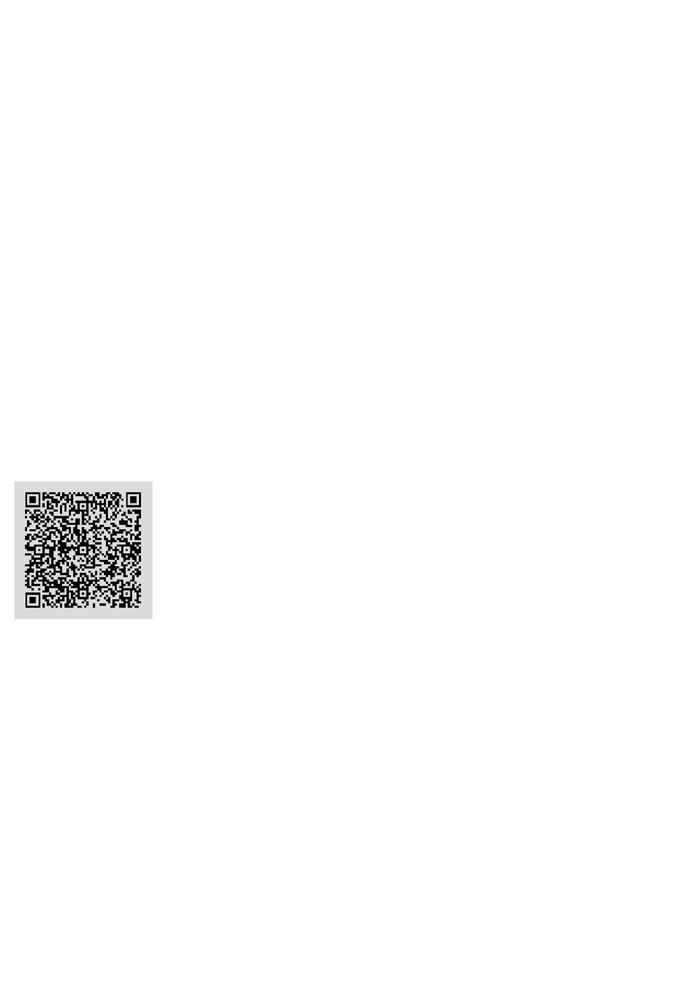
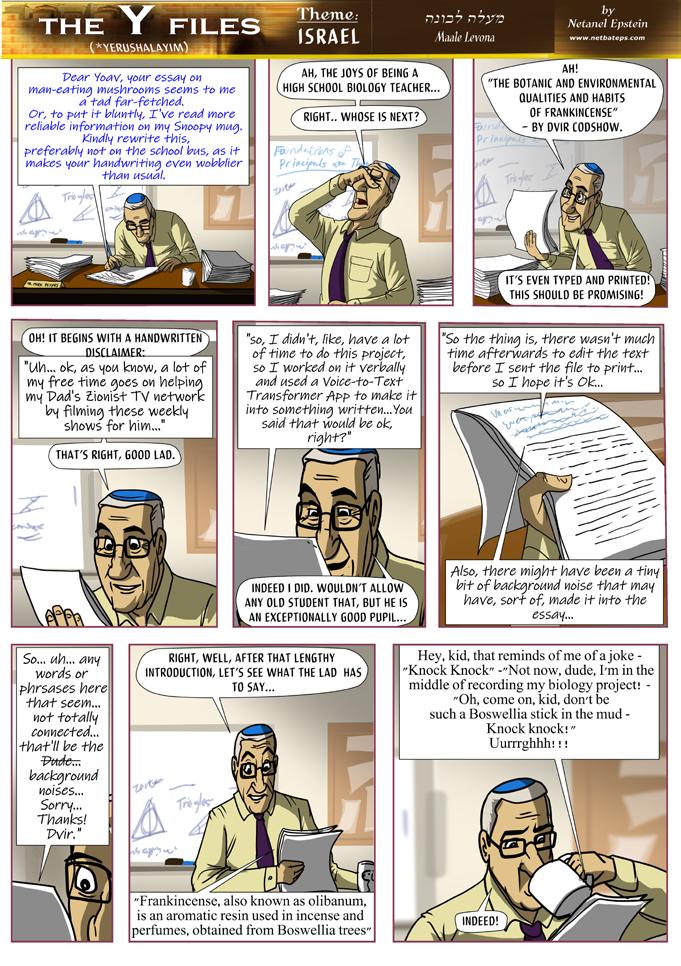



The Beit Hamikdash was a place filled with incredible miracles and jaw dropping beauty. Whether it be the impressive structure which was a wonder of the ancient world or the literal fireball that descended from the sky to accept the korbanot, it was a place filled with true awesomeness. Due to this reality, we would expect that the beginning of the service in the Beit Hamikdash would begin with something epic. However, every day the avoda started with the following.
1. And the Lord spoke to Moses, saying, :רֹמאל השמ־לא ’ה רבדיו .א
2. Command Aaron and his sons, saying, … :רֹמאל וינב־תאו ןֹרהא־תא וצ .ב
3. And the kohen shall don his linen tunic, and he shall don his linen trousers on his flesh. And he shall lift out the ashes into which the fire has consumed the burnt offering upon the altar and put them down next to the altar.
ורׂש ב־לע �ש בלי דב־יסנכְמו דב ודמ ןהכְה �ש בלו .ג
־לע הלעה־תא �ש אה לכְאֹת רשא ןשדה־תא םירהו :חבזמה לצא ומׂש ו חבזמה
The holy Kohanim started off the day in the amazing Mishkan by cleaning the leftover ashes from the previous day’s service, known as the Trumat Hadeshen. This simple act was the very first thing done every single
morning in the Mishkan.
It begs the question why was this given as a specific commandment? Sweeping away the burnout ashes seems like a job for a janitor not for a priest. I think the Torah is teaching us a valuable life lesson. So much of life we deal with mundane and seemingly insignificant things like chores, flat tires, and grocery shopping. There are two ways we can approach these things. They can be seen as insignificant nuisances that we have to deal with to get by in life, or we can view them as special unique opportunities to grow as Jews.
The Arizal teaches us that there is no day and no moment that is like the one before it, every single experience we have in life is truly unique. A traffic jam can be an exercise in emunah, a basketball game can be a way of working on one’s anger, and a visit to the doctor can be a way to appreciate the wonder of God’s creation. The simple service of the Trumat Hadeshen teaches us that each seemingly small moment in life has its own unique purpose for us to learn and grow from.

In this week’s parsha, parshat Tzav, we read about a special korban that was brought by the Cohanim when they first started their avodah in the Mishkan. This korban consisted of only
flour. What was unusual about this korban was that the Kohen Gadol brought the flour offering not only on his first day of service, but every single day that he was a Kohen gadol.
He brought half of the flour in the morning and half in the evening.
The question we can ask is why he had to bring this sacrifice every single day.
I recently heard a dvar torah from Harav Mordechai Machlis that explains an answer from the Abarbanel which says that for a Kohen Gadol to bring forgiveness on behalf of the Jewish people for their sins, he first had to work on his own character traits and midot.
The Kohen Gadol may feel some arrogance because of his high position in Israel.
So, by bringing a flour offering which was usually brought by poor people to the mishkan he can feel humility and compassion for everyone.
The poor people will also not be embarrassed to bring their sacrifices knowing that the Kohen Gadol brought the same type of offering.
I believe we can learn a great lesson from this korban of the Kohen Gadol that as high school students we should also always be working on our midot, straightening our love of Torah, doing mitzvot and acts of kindness for all of Am Yisroel.


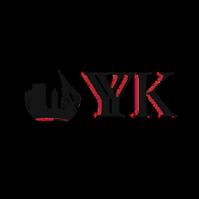

New Project: “Arnona Valley”

6
Large
200
4

EXCLUSIVE:
2
Architecturally
2nd
